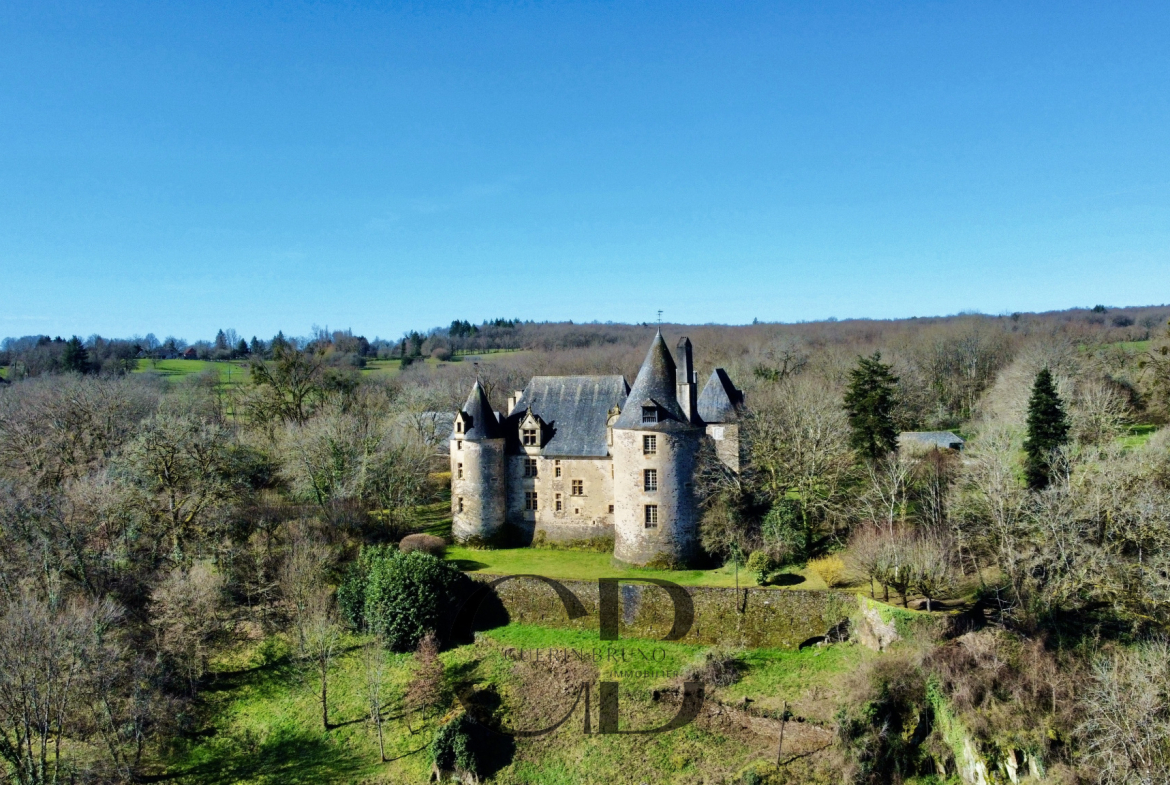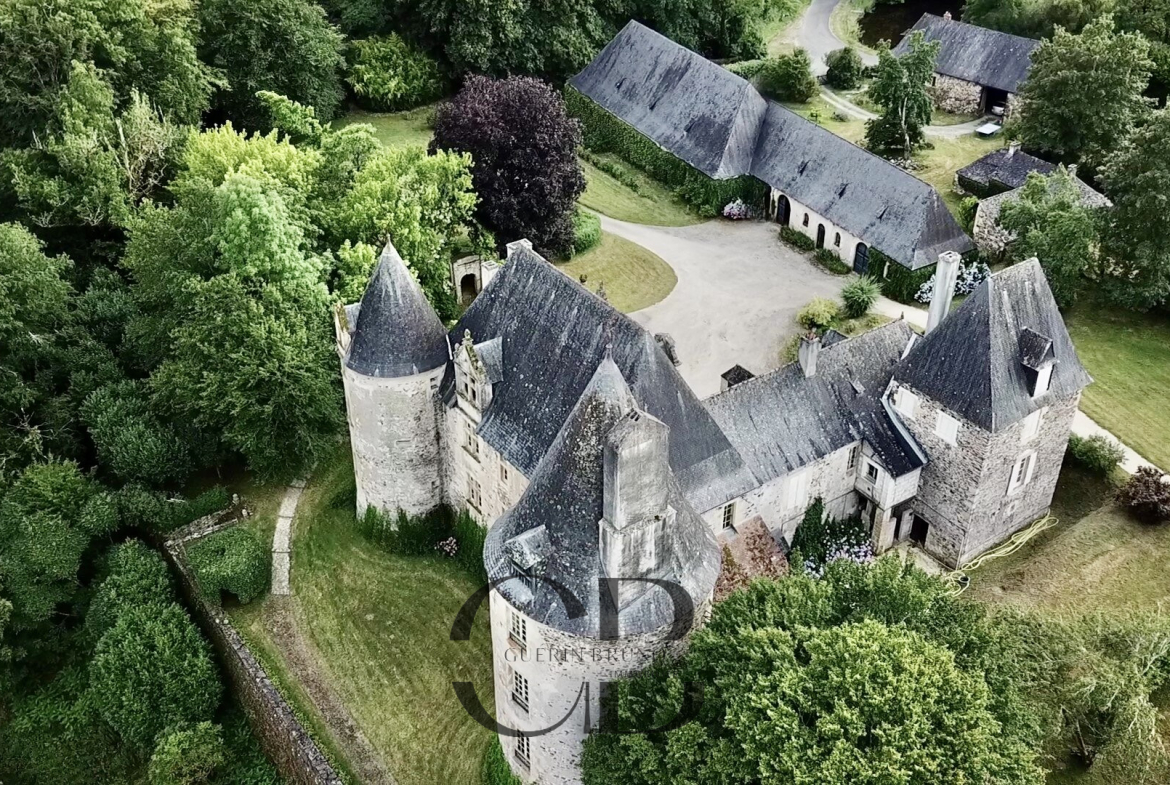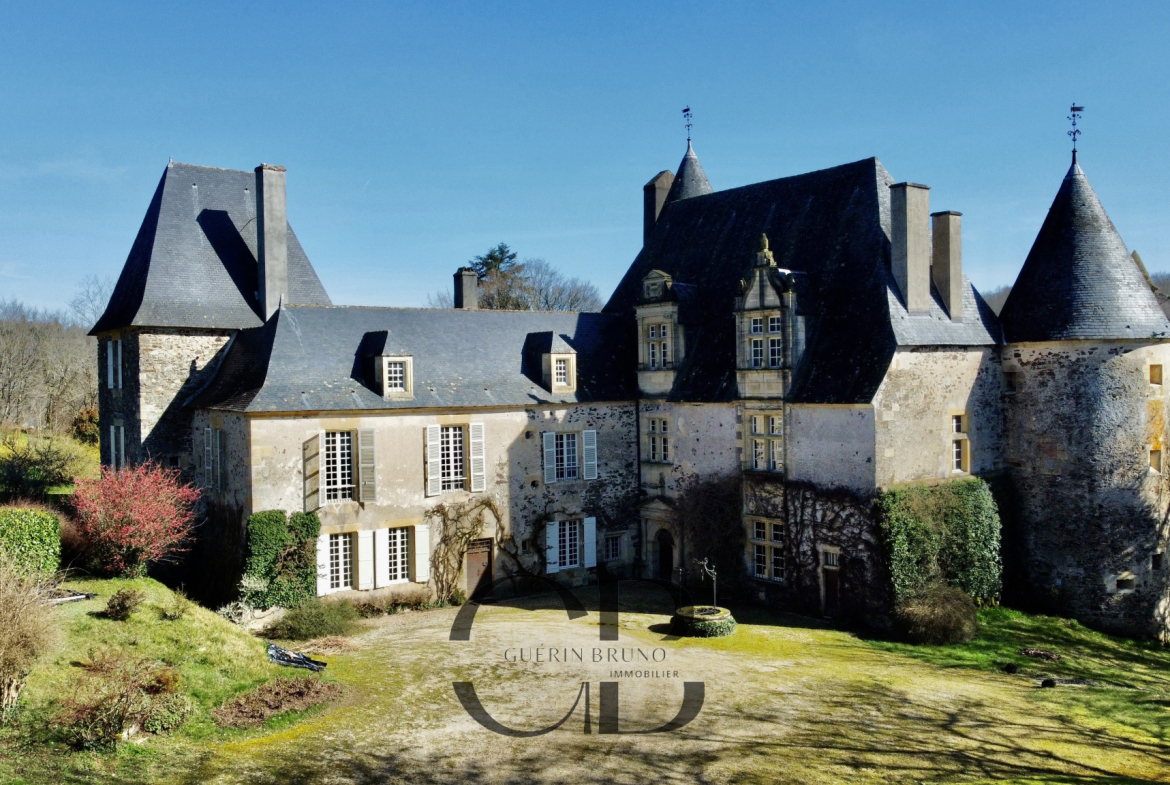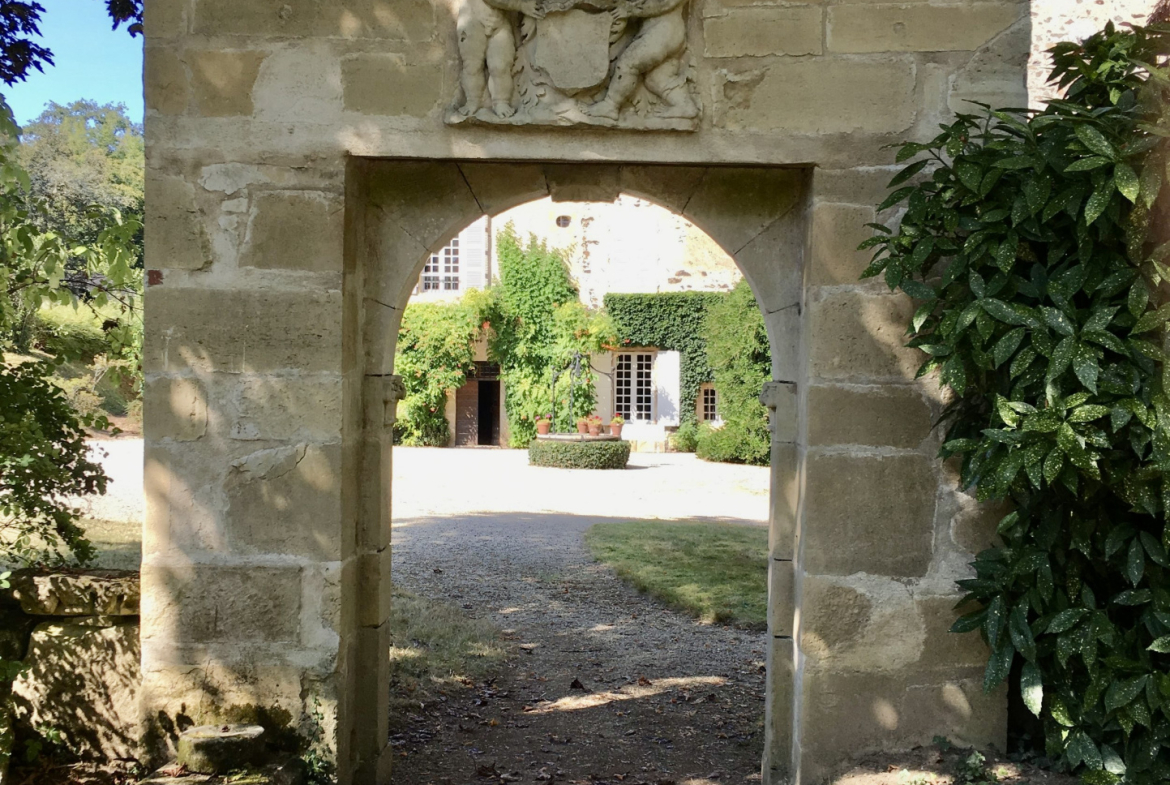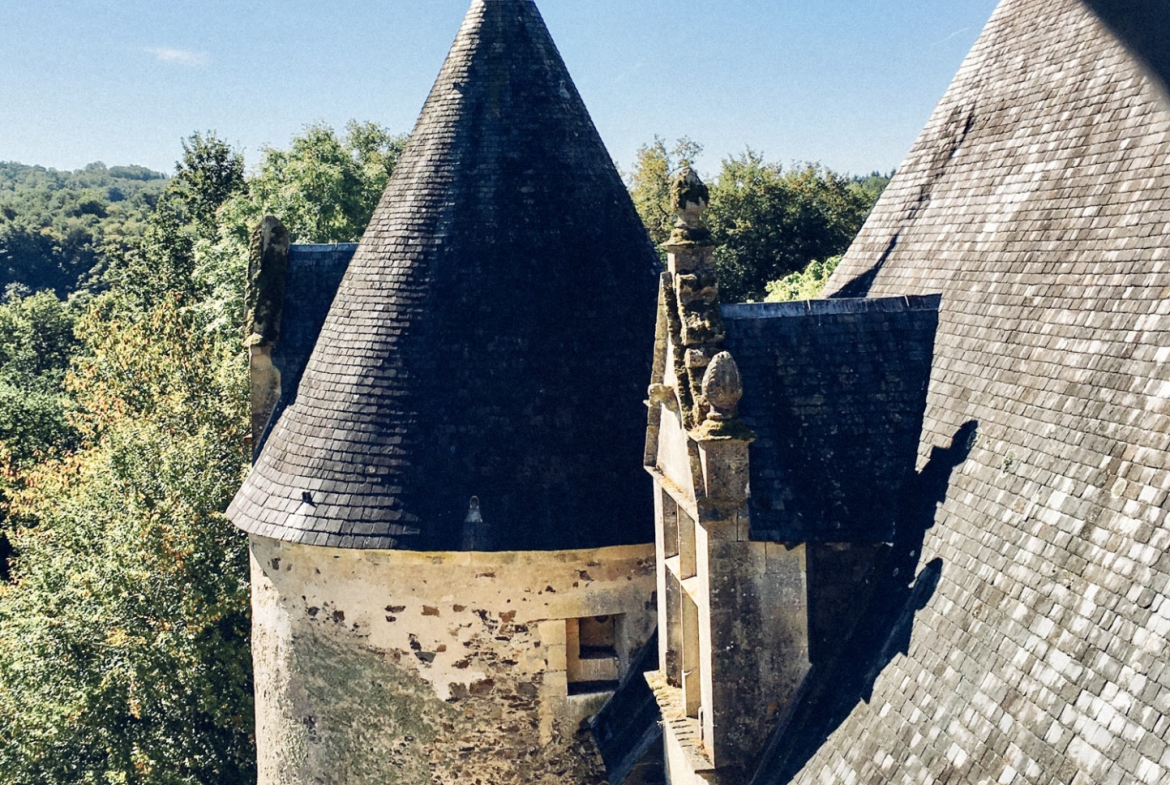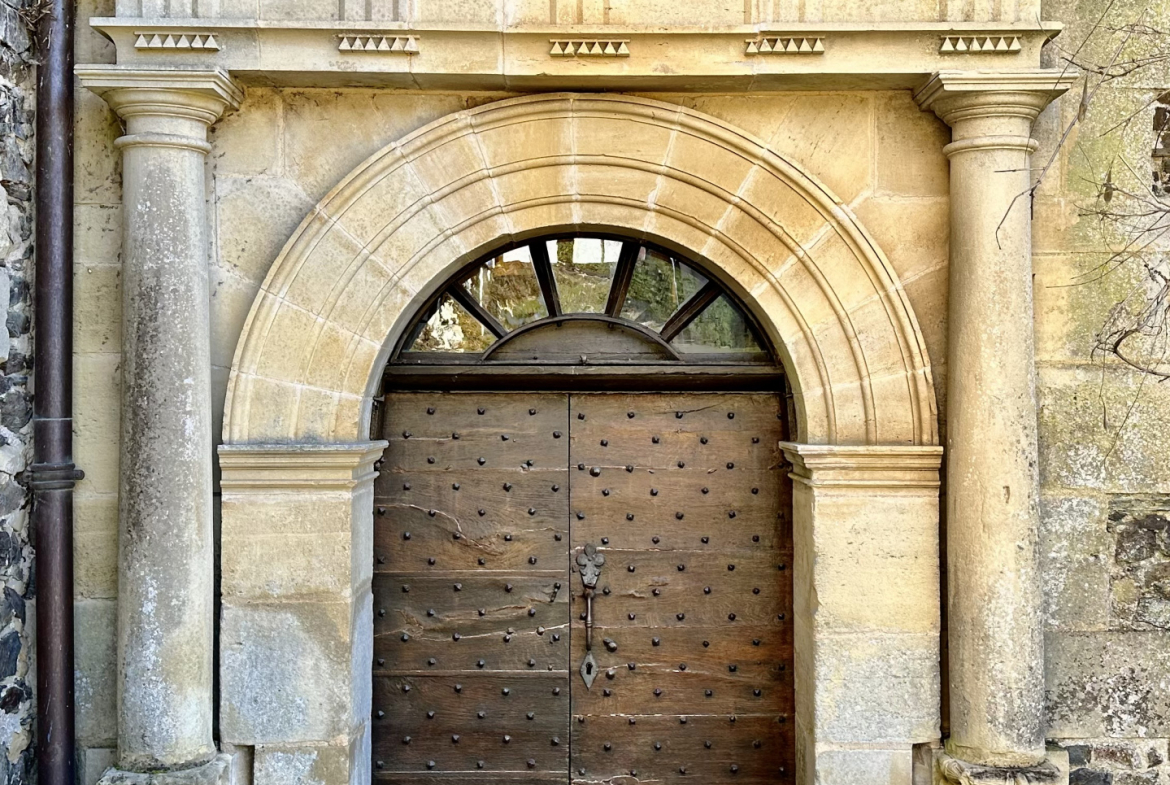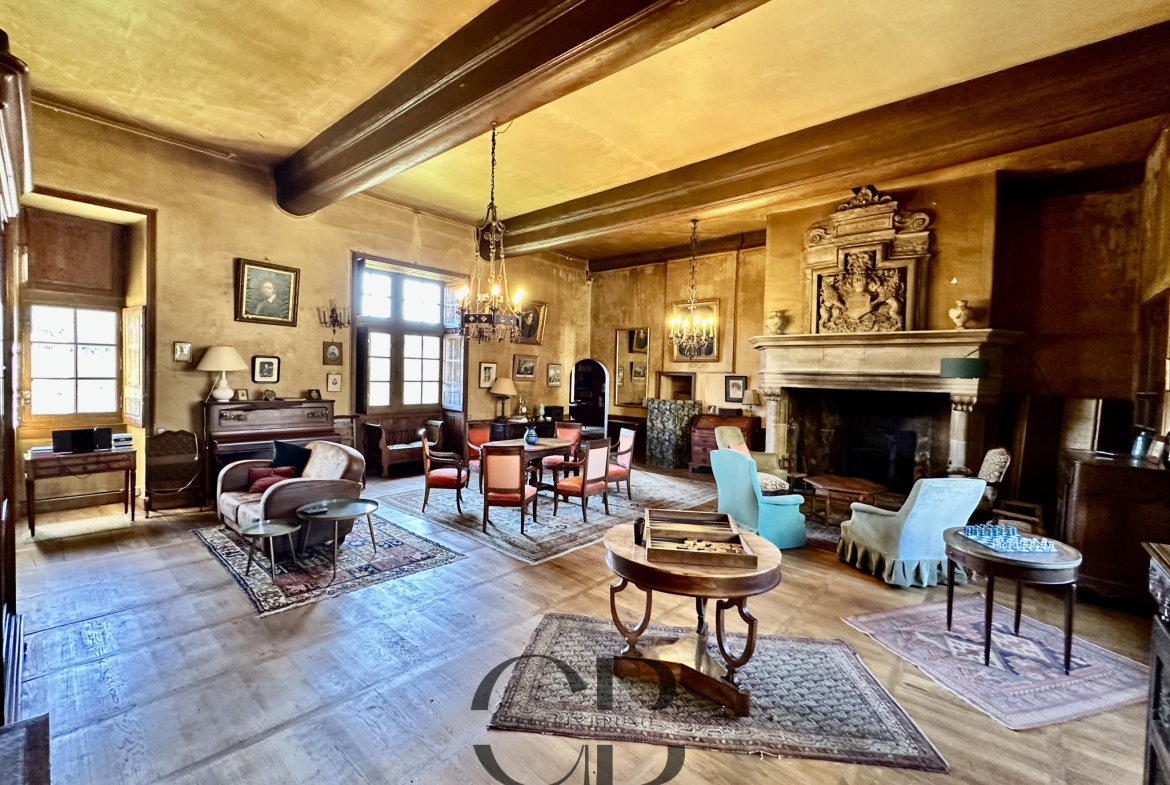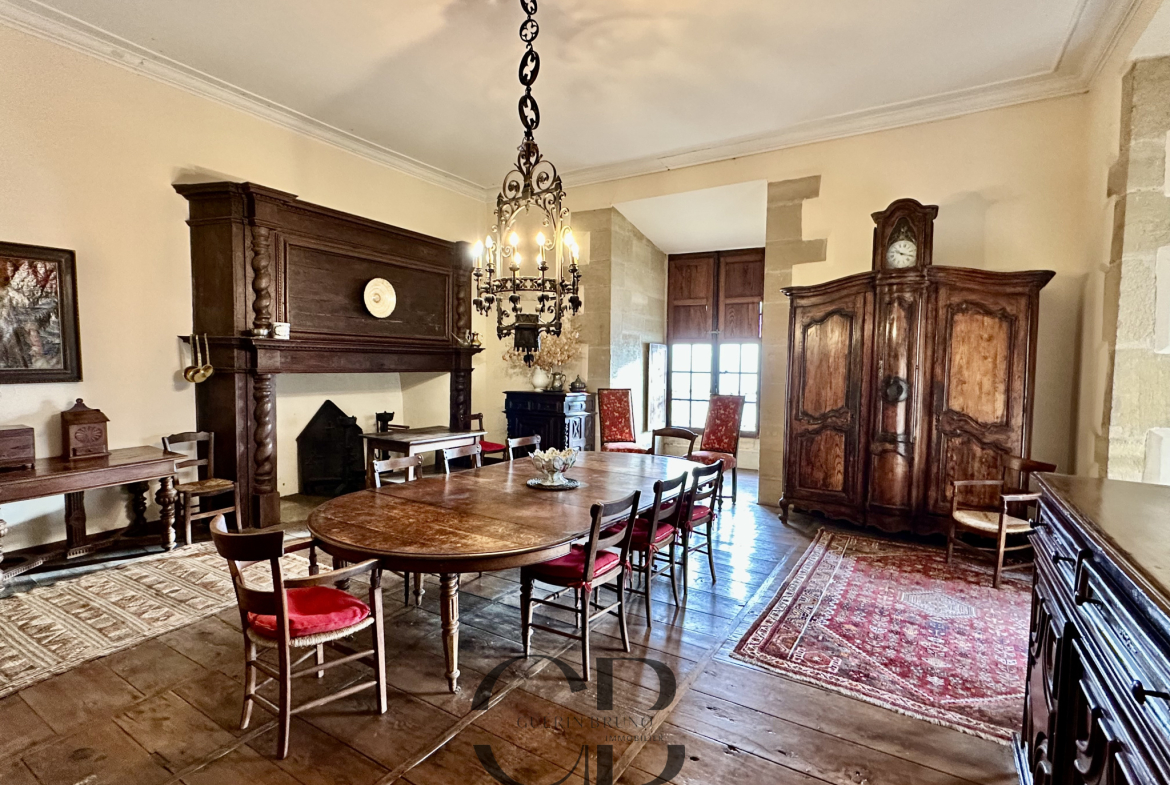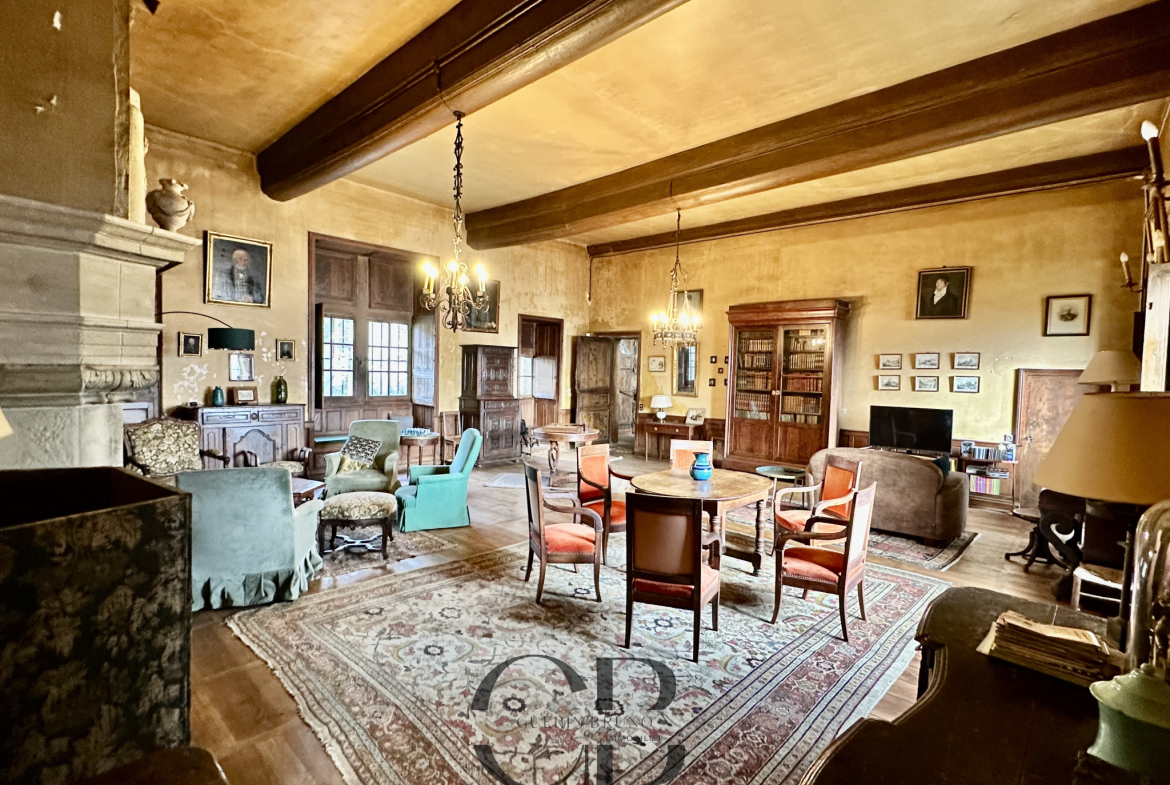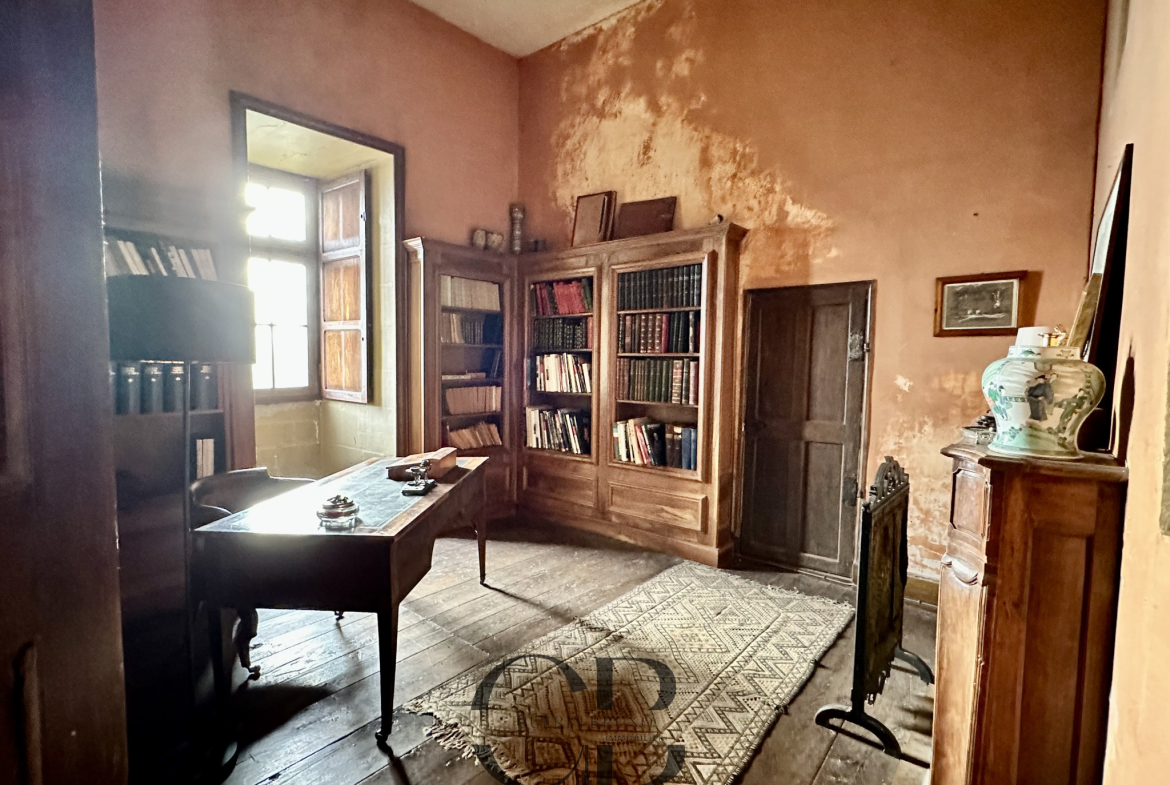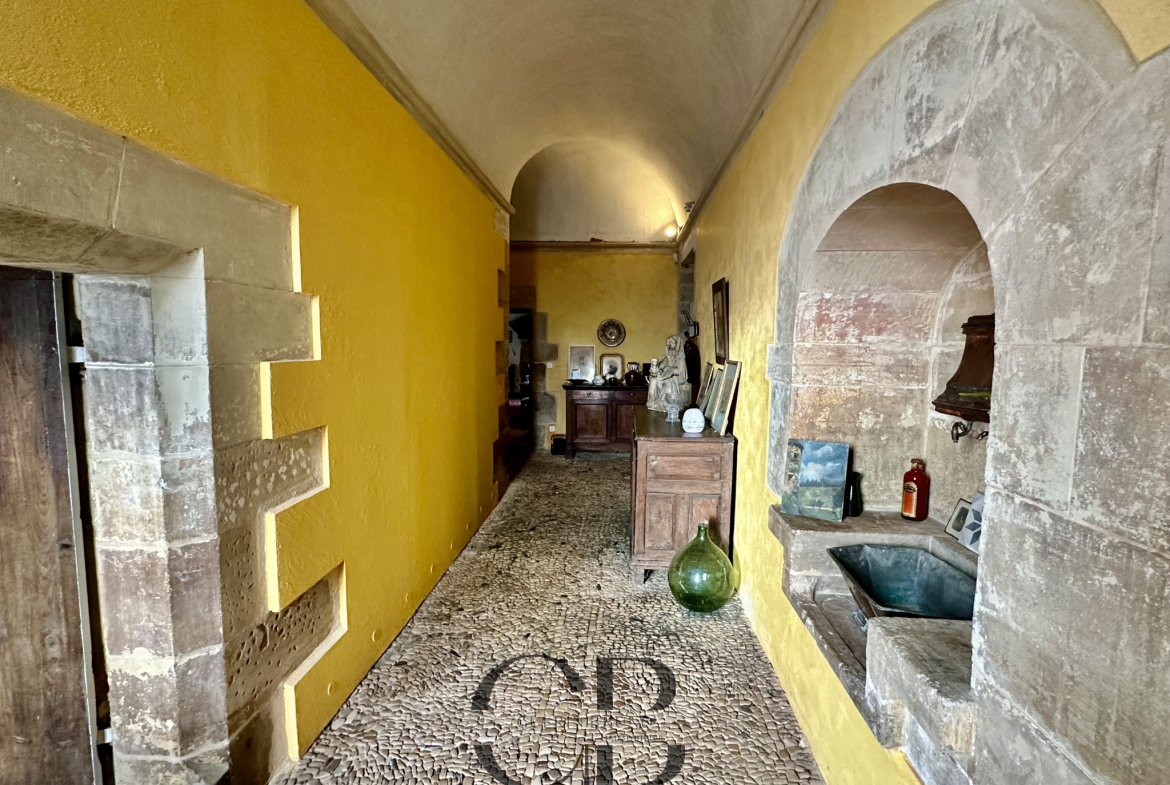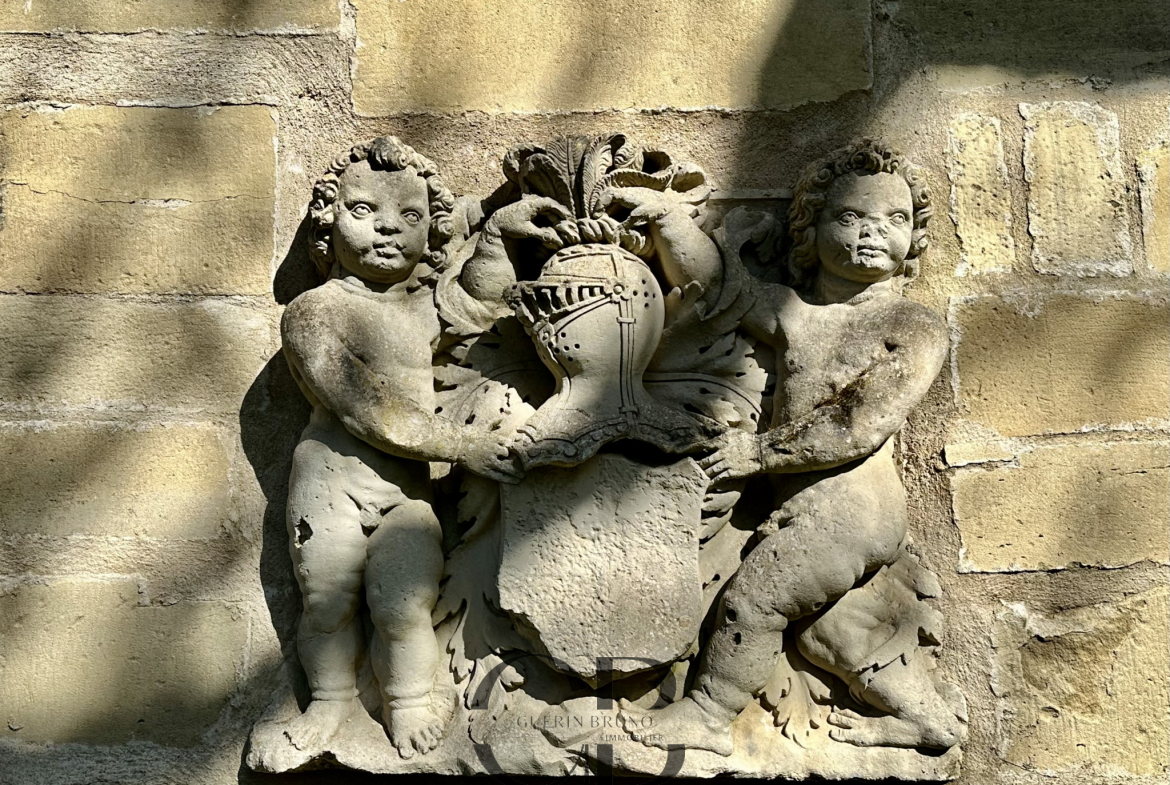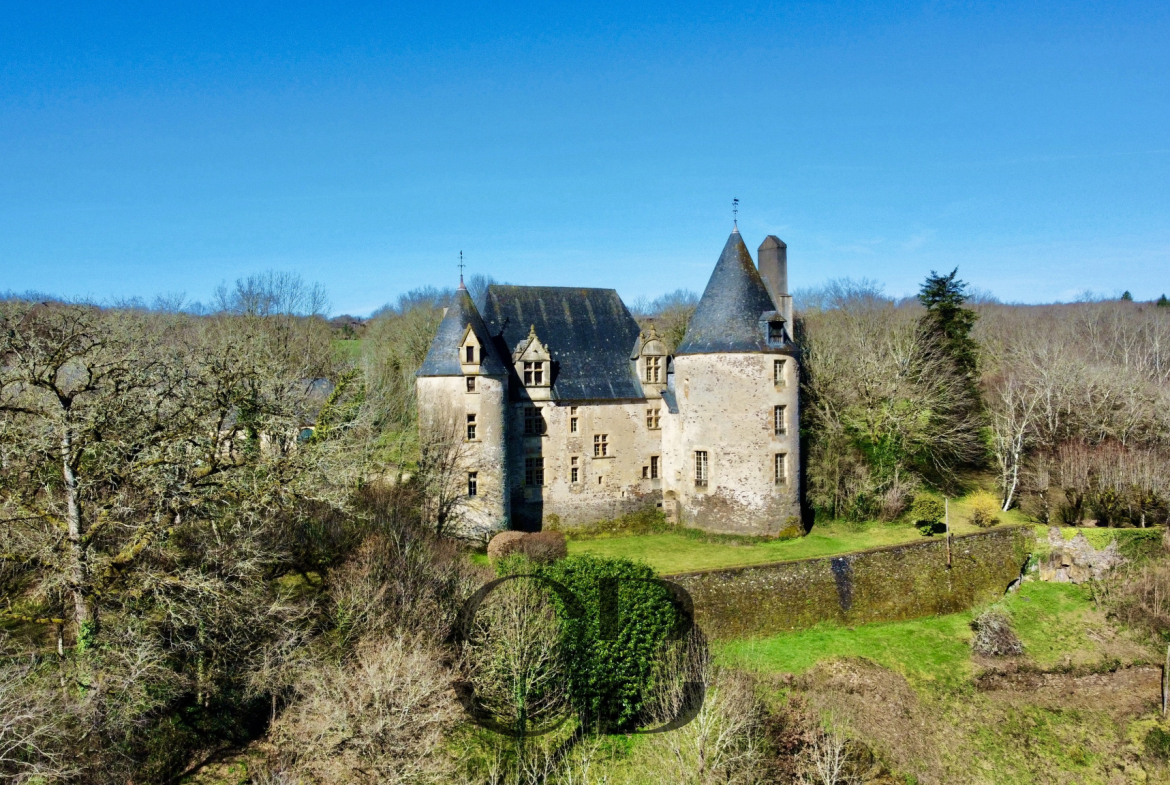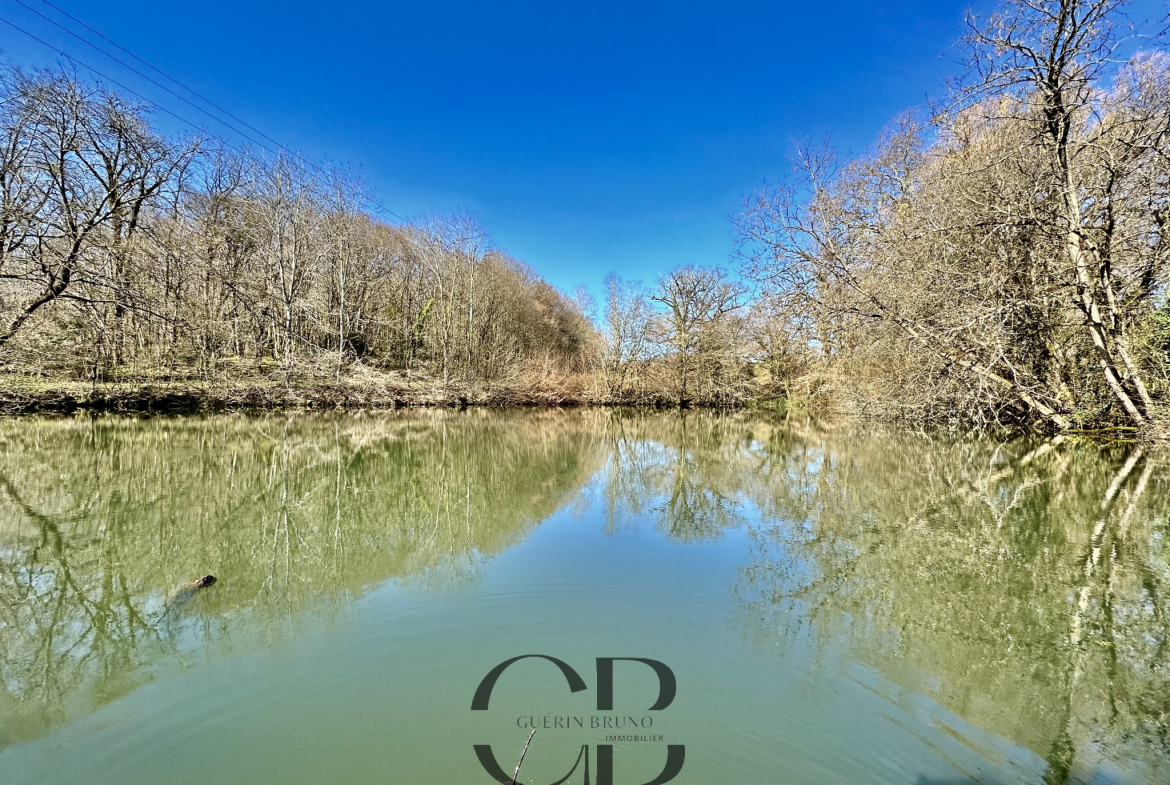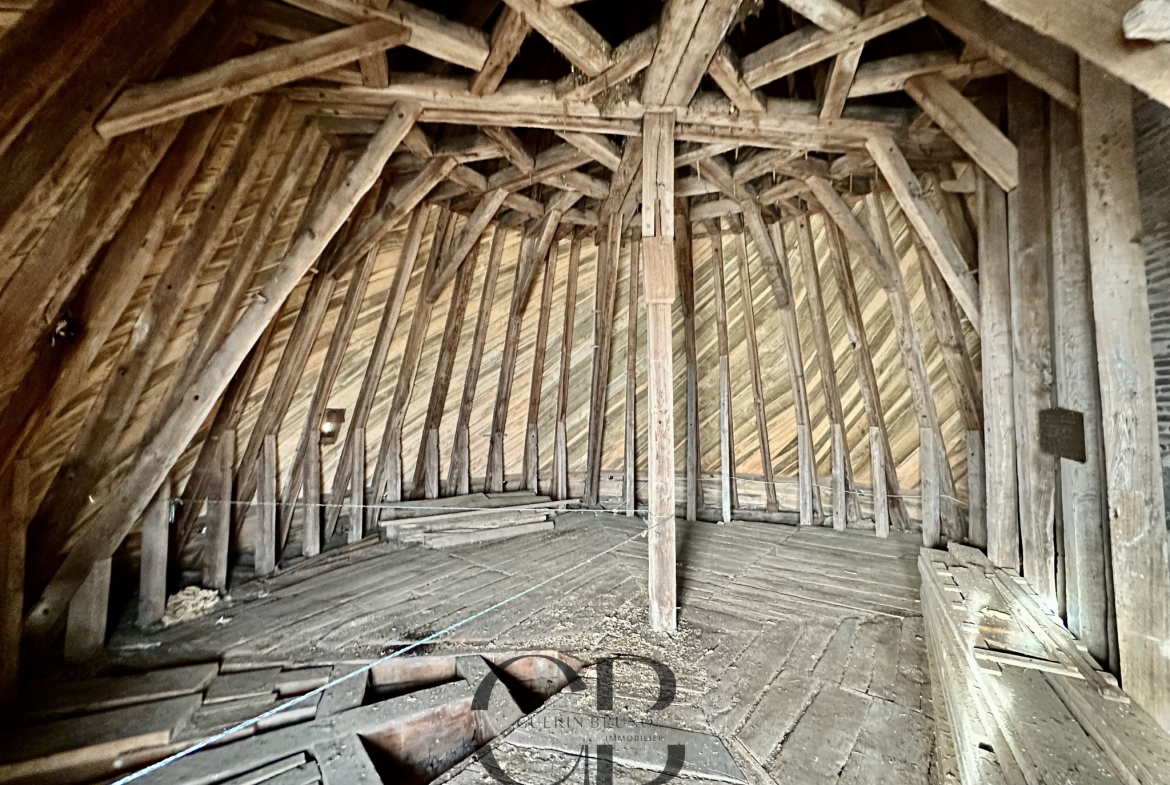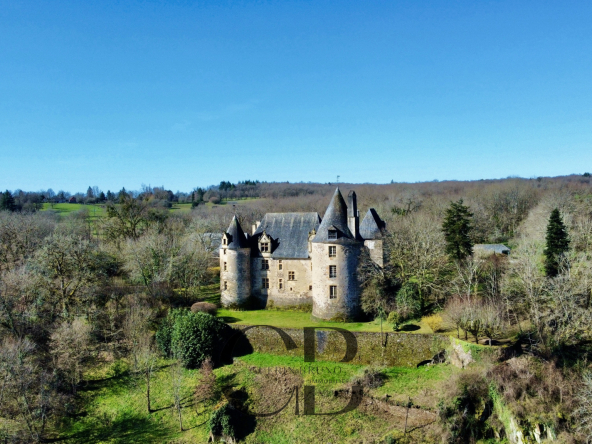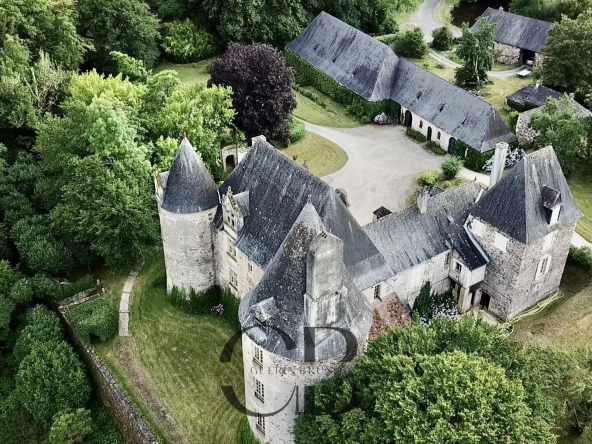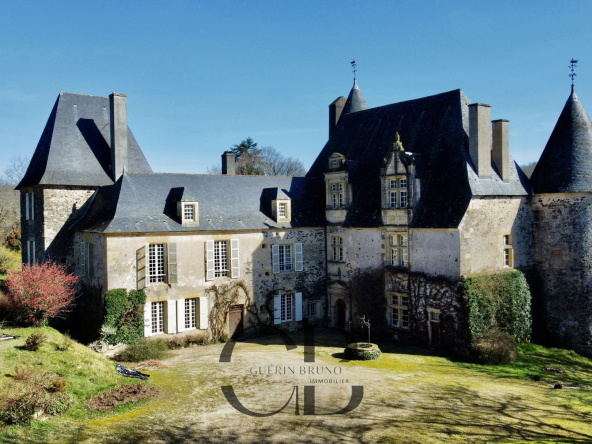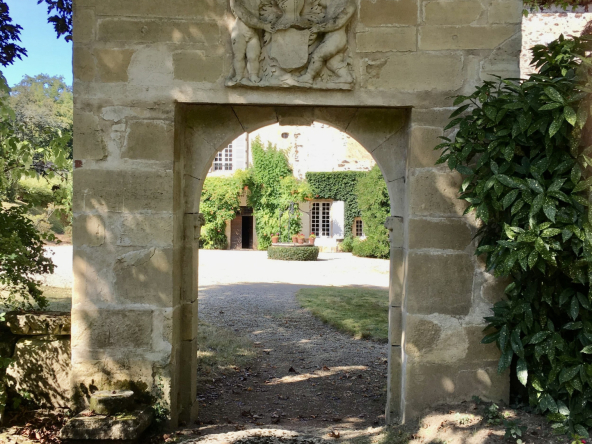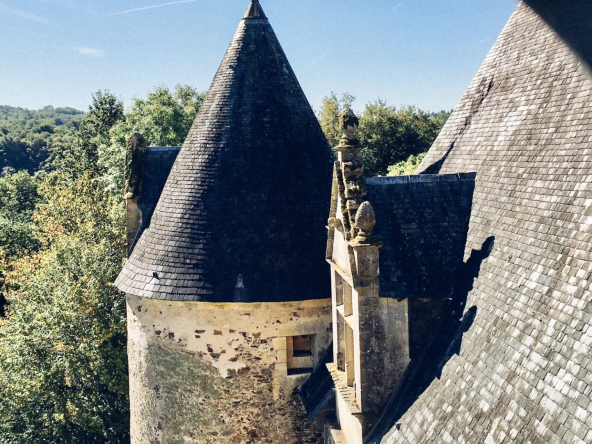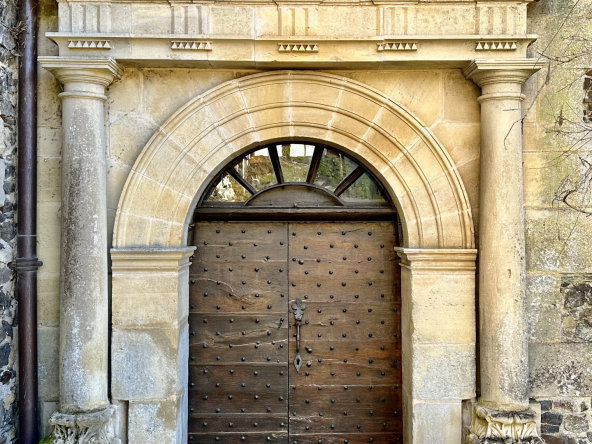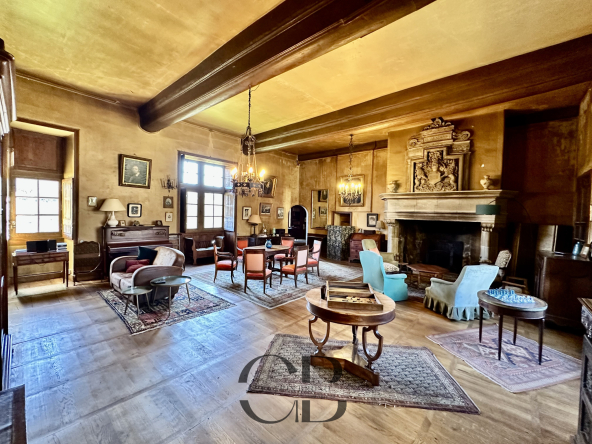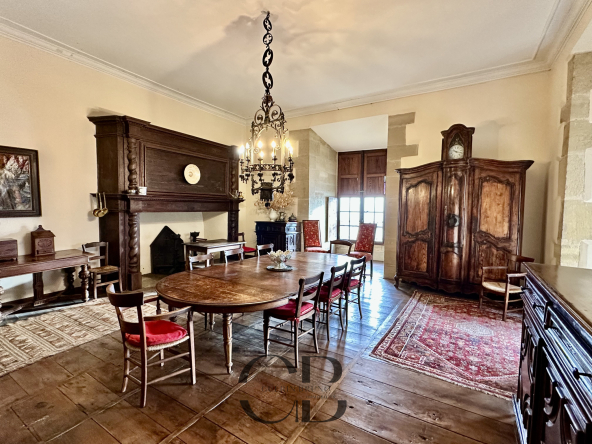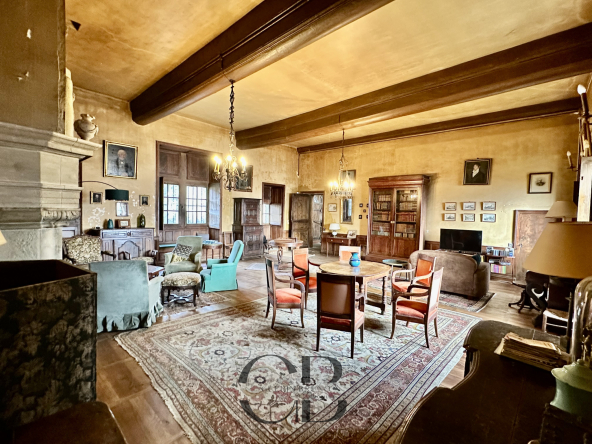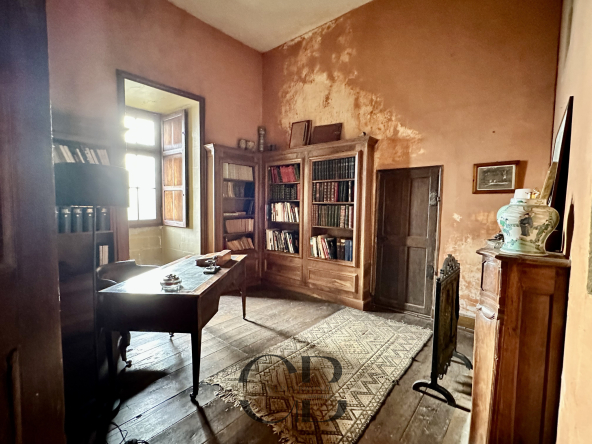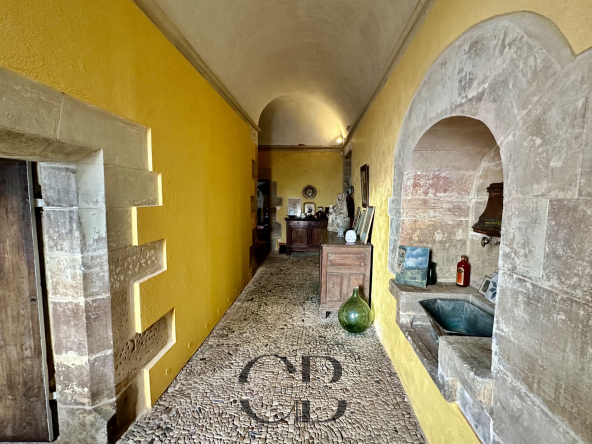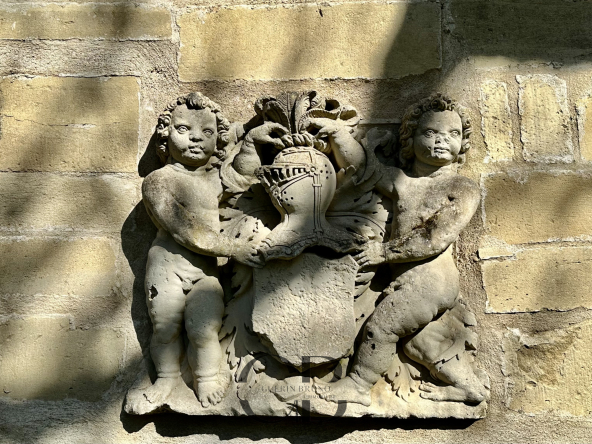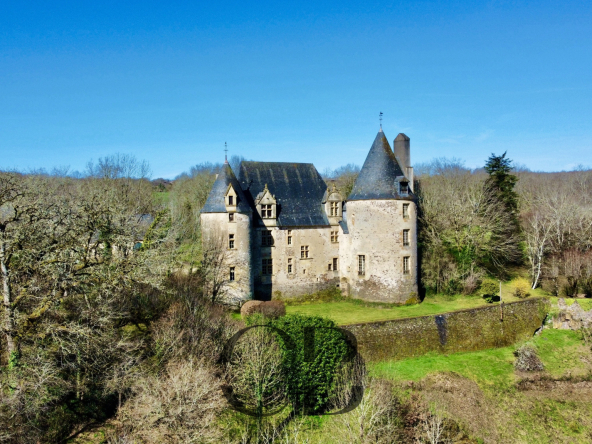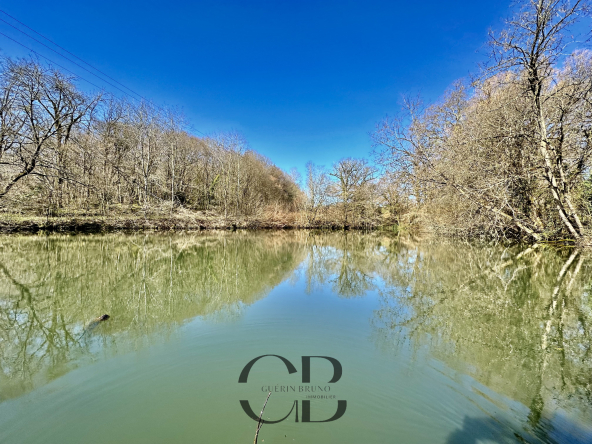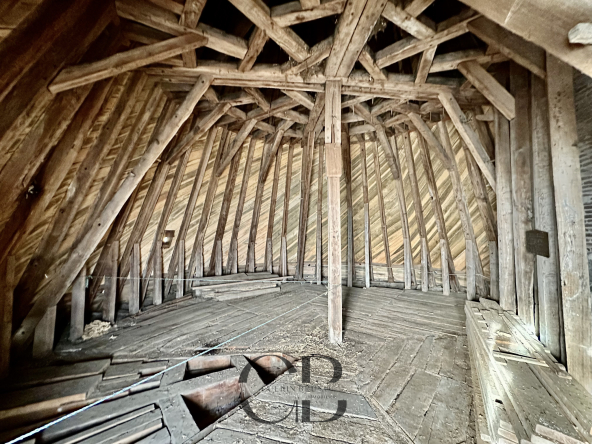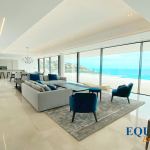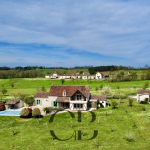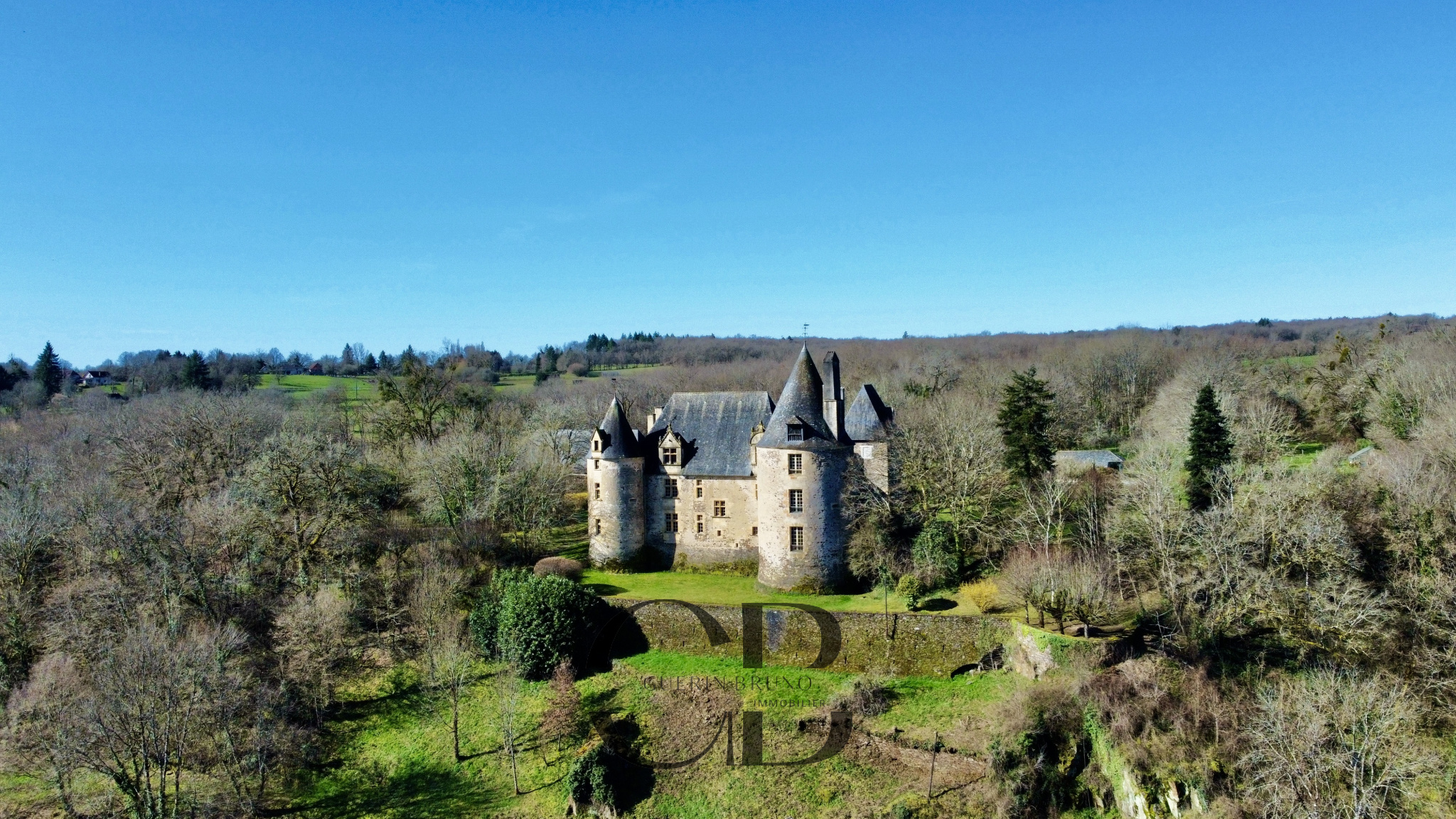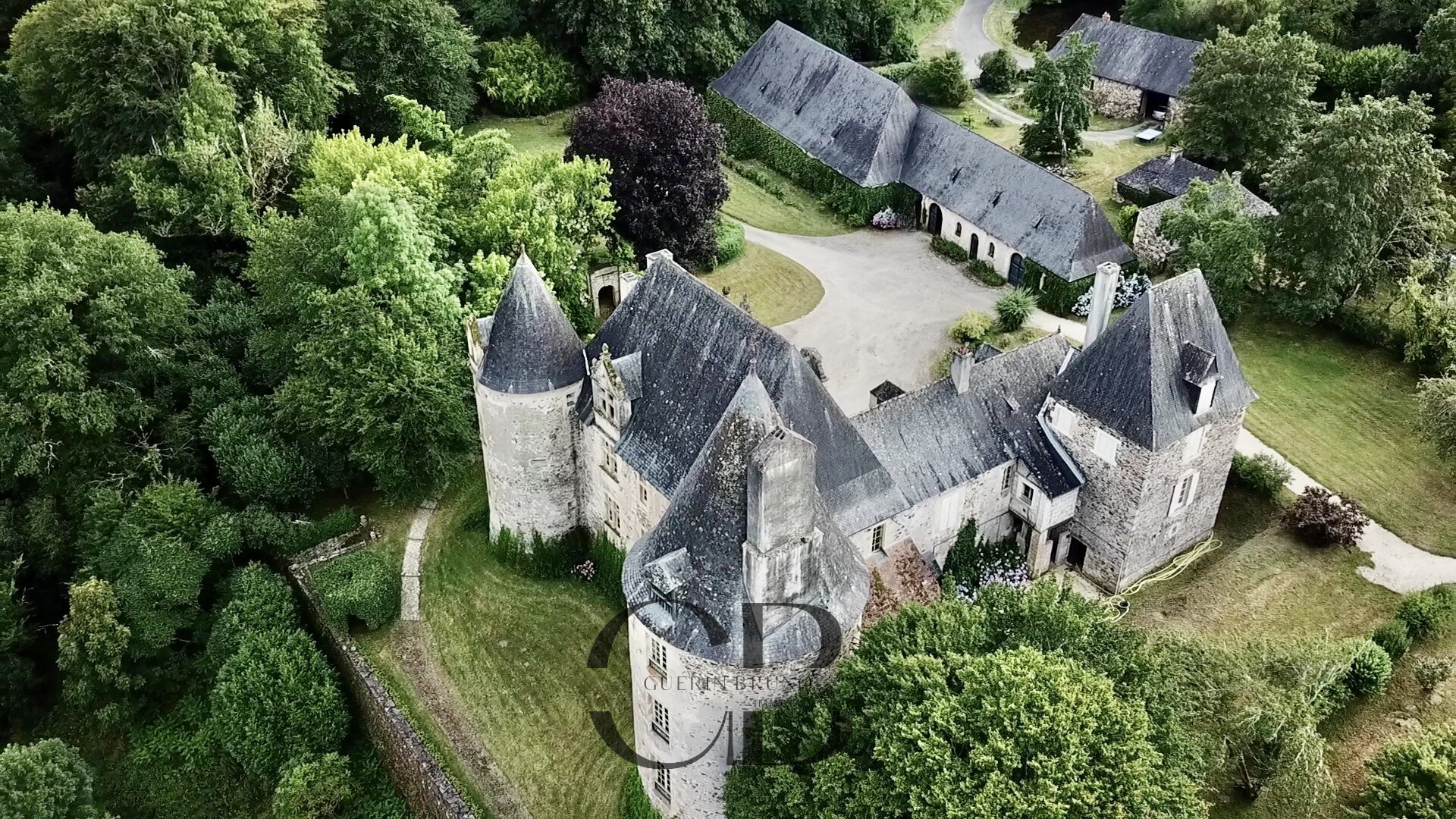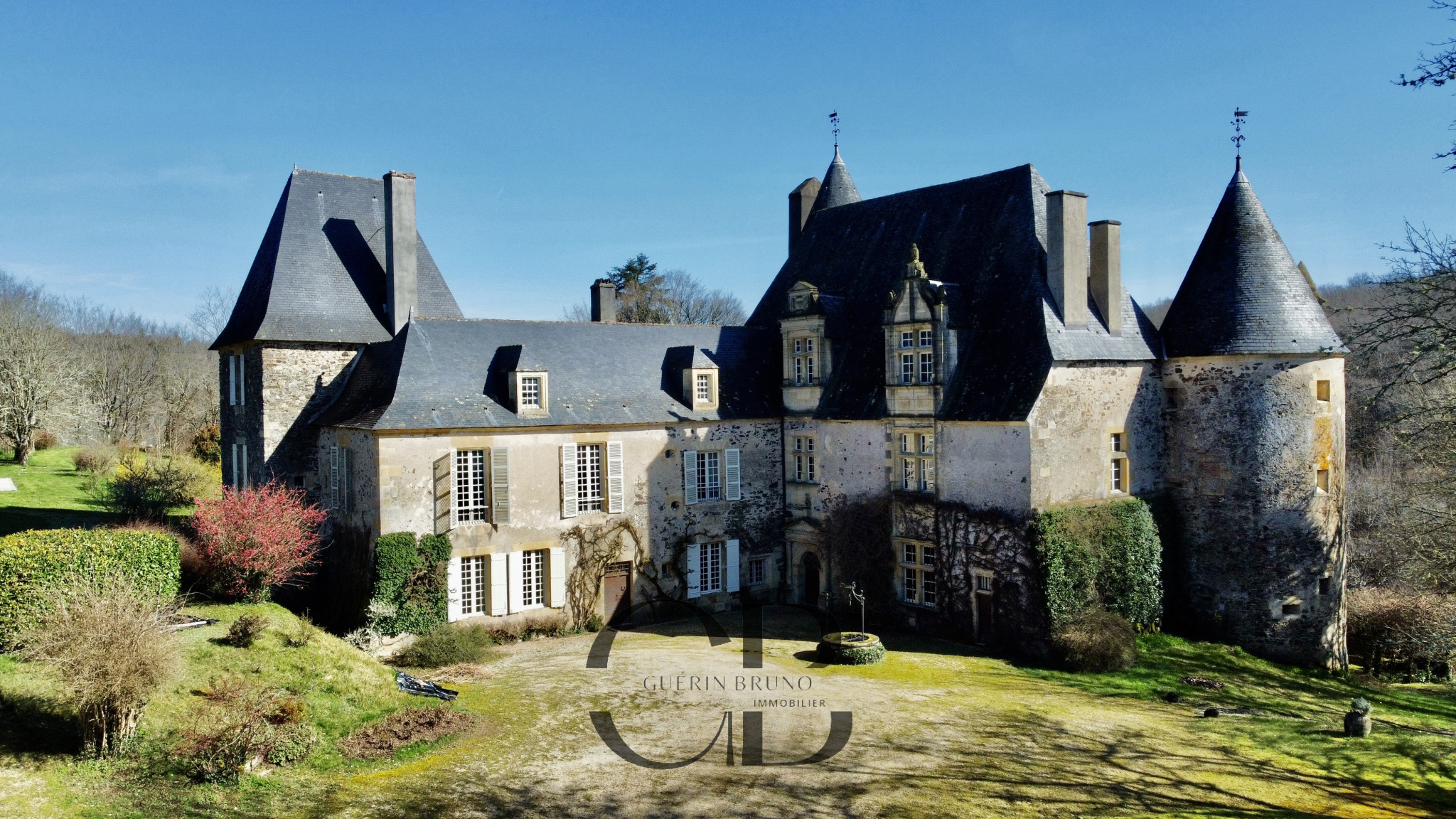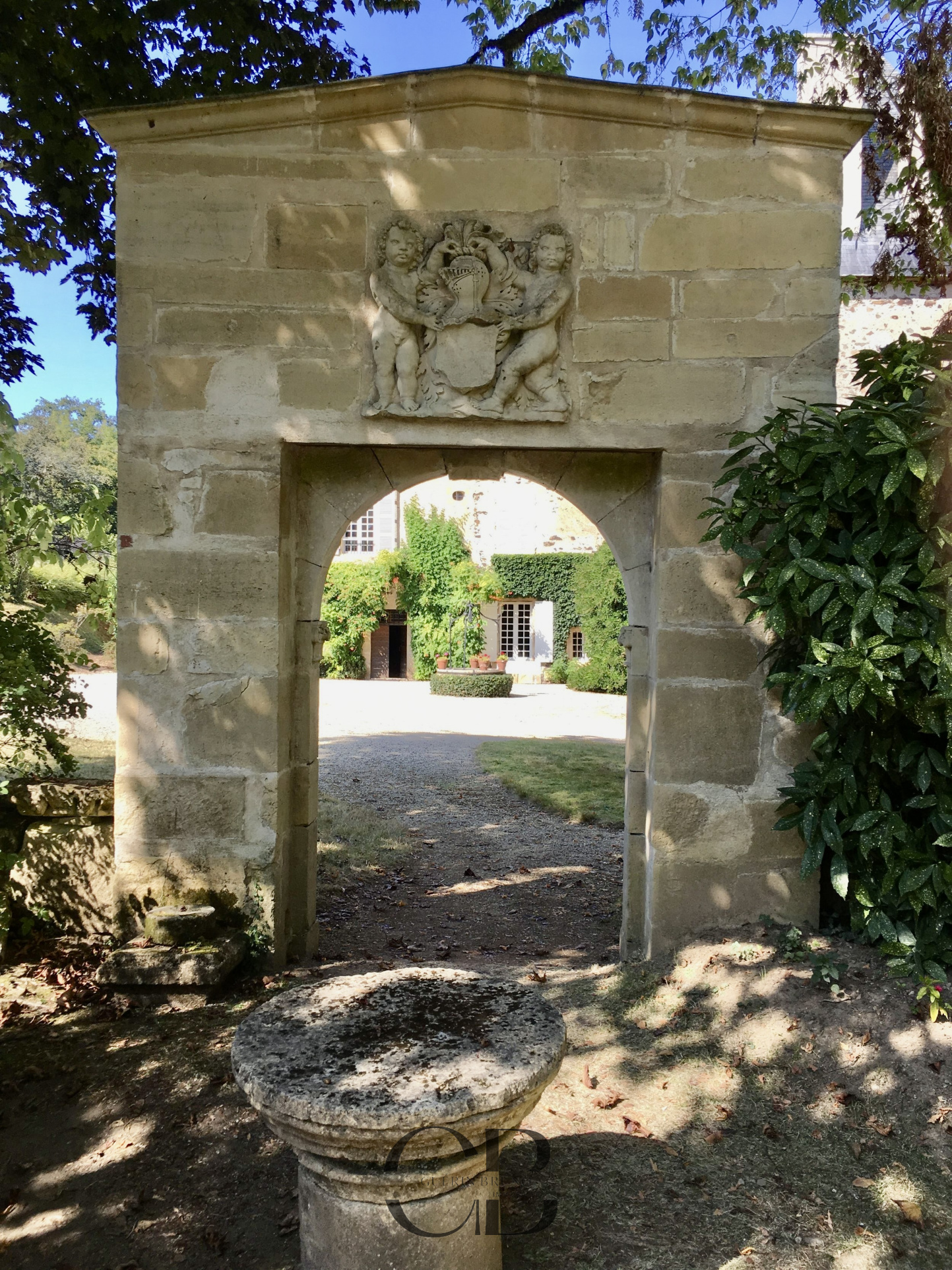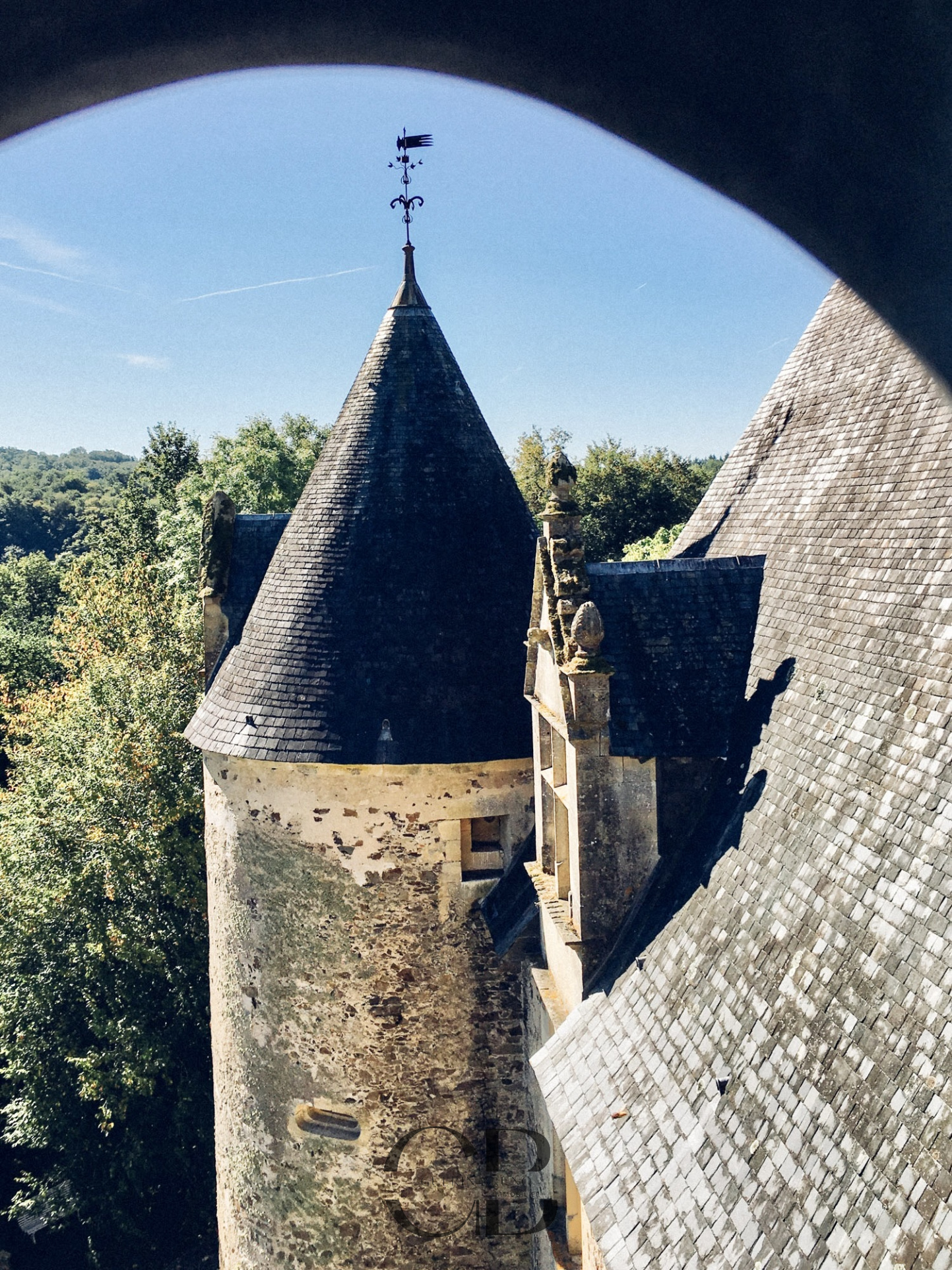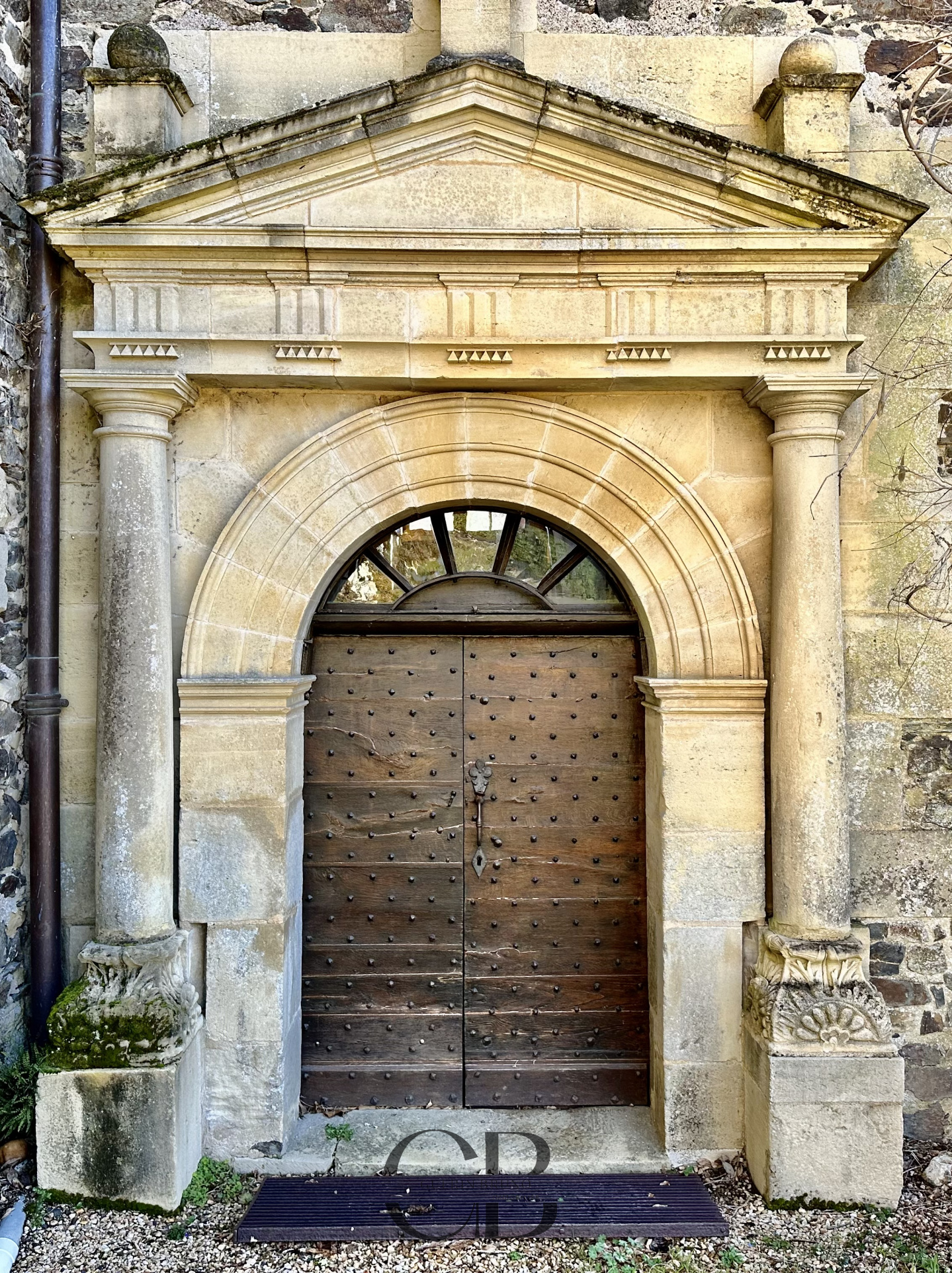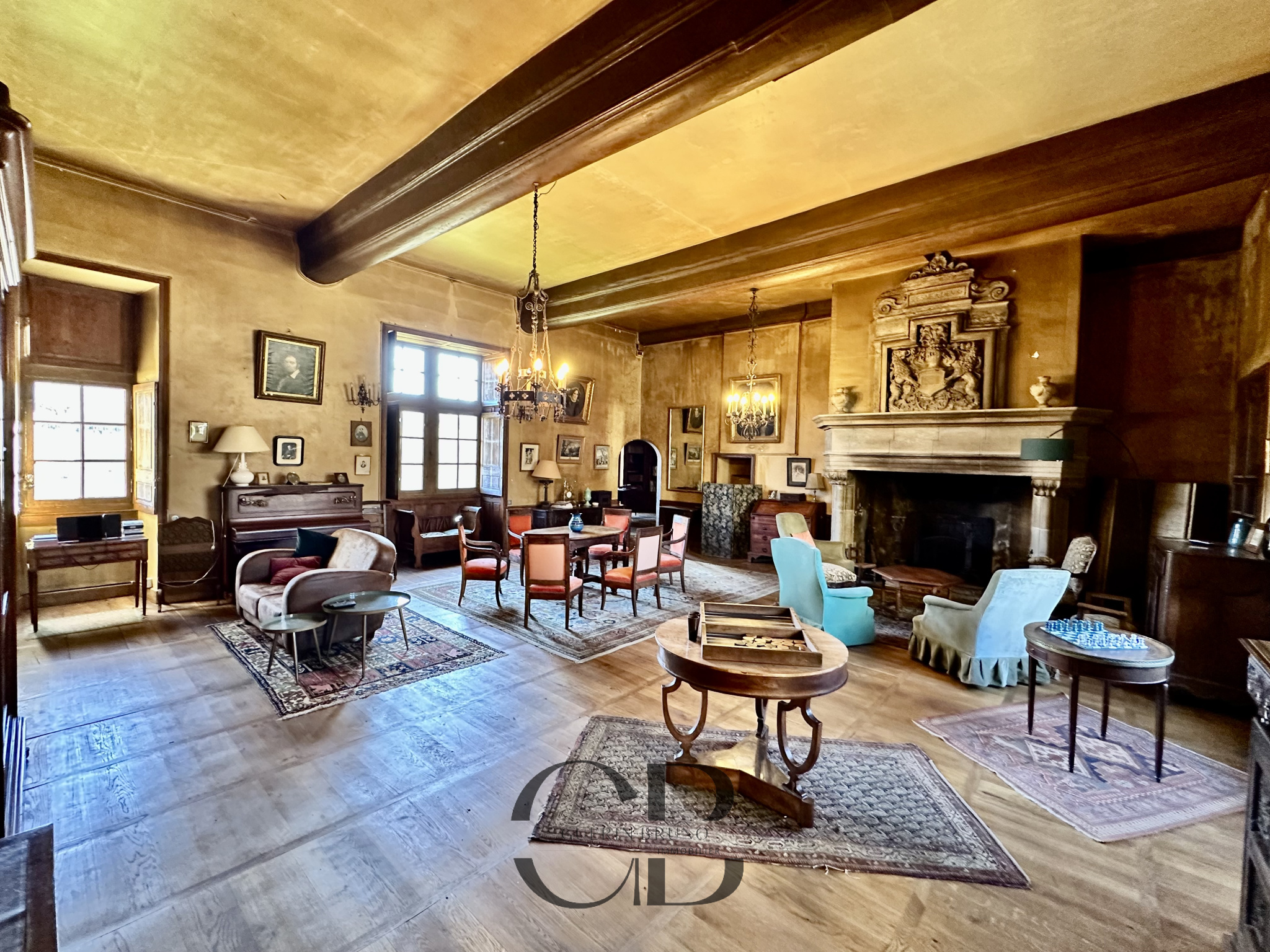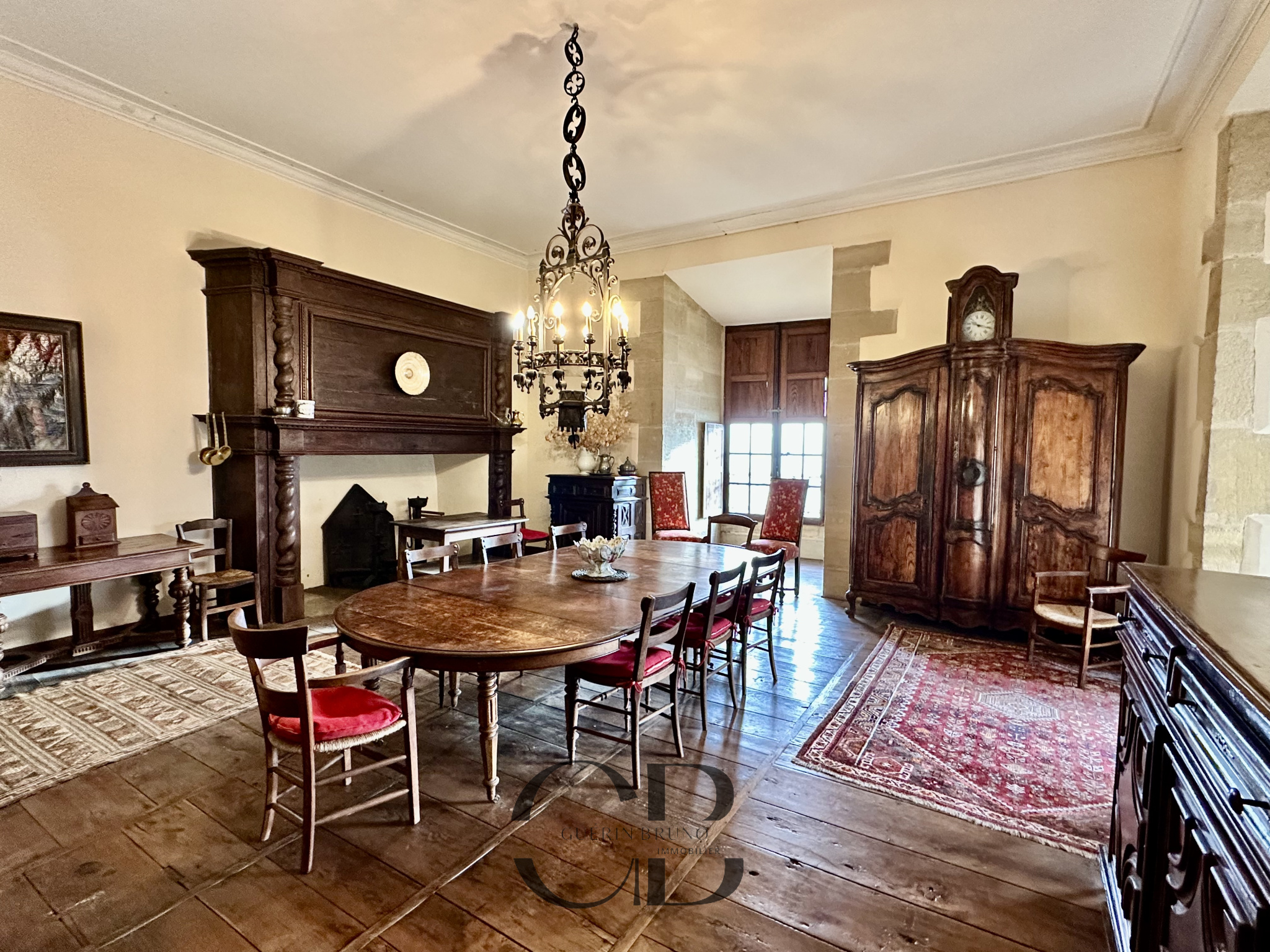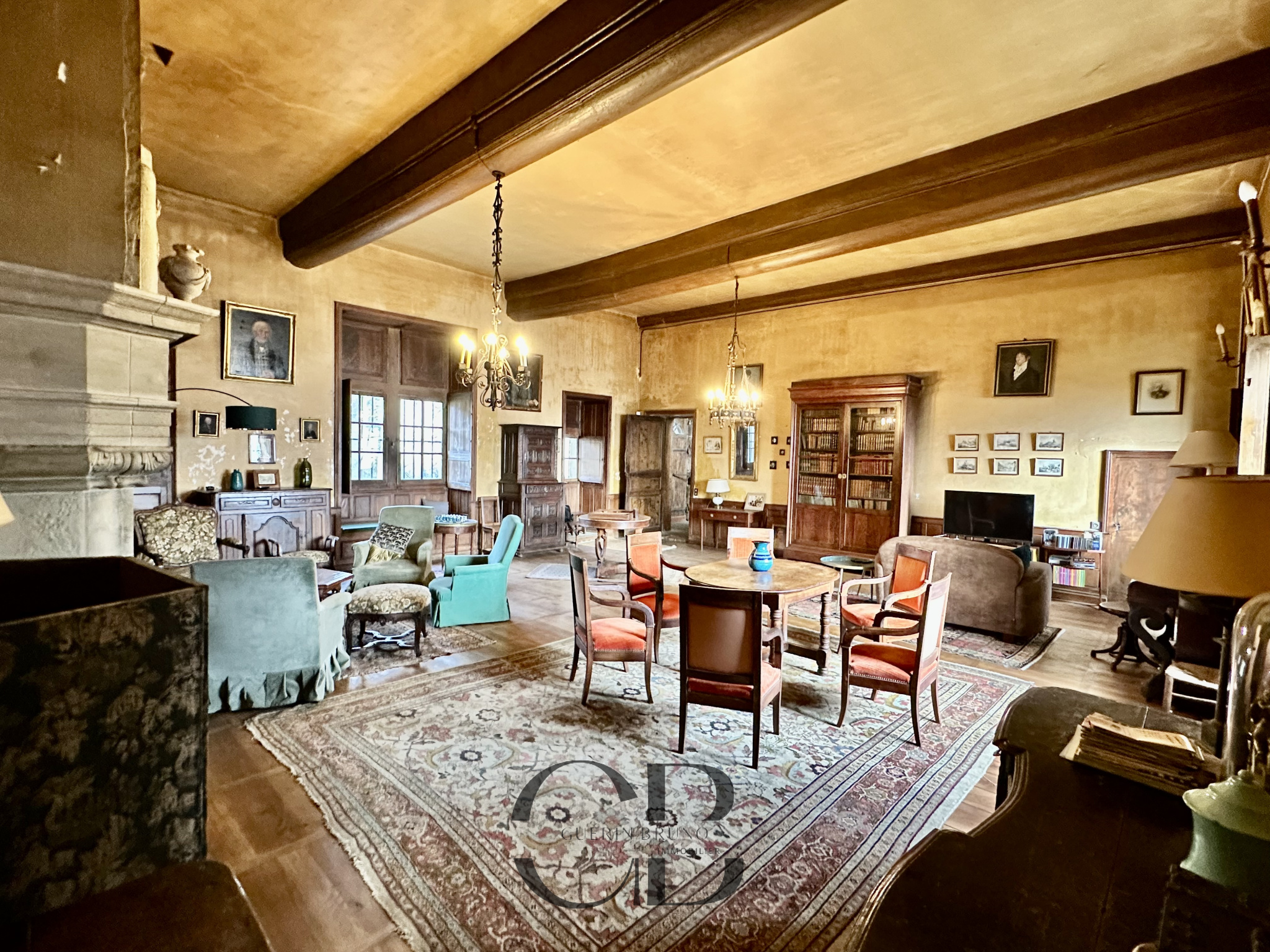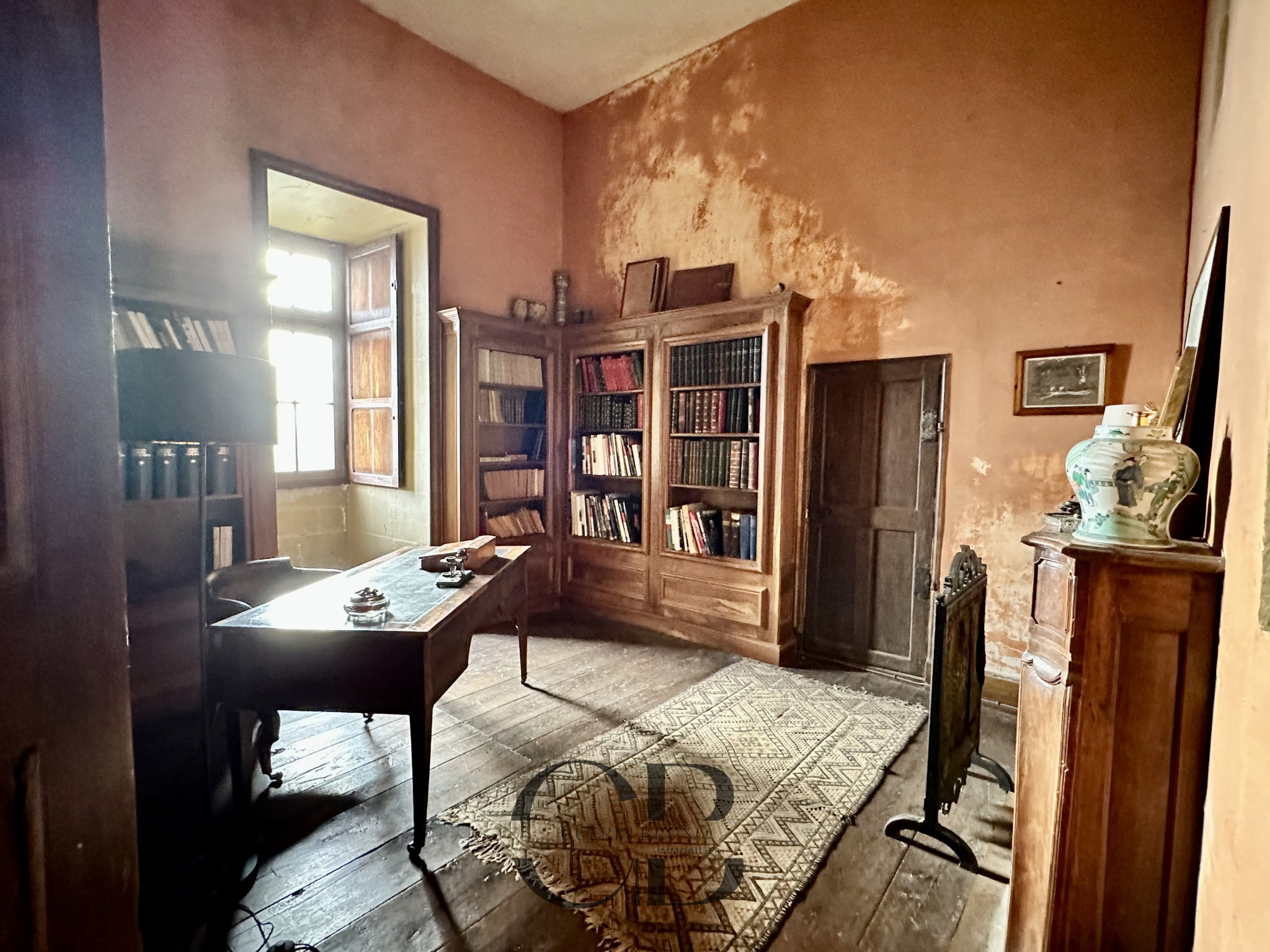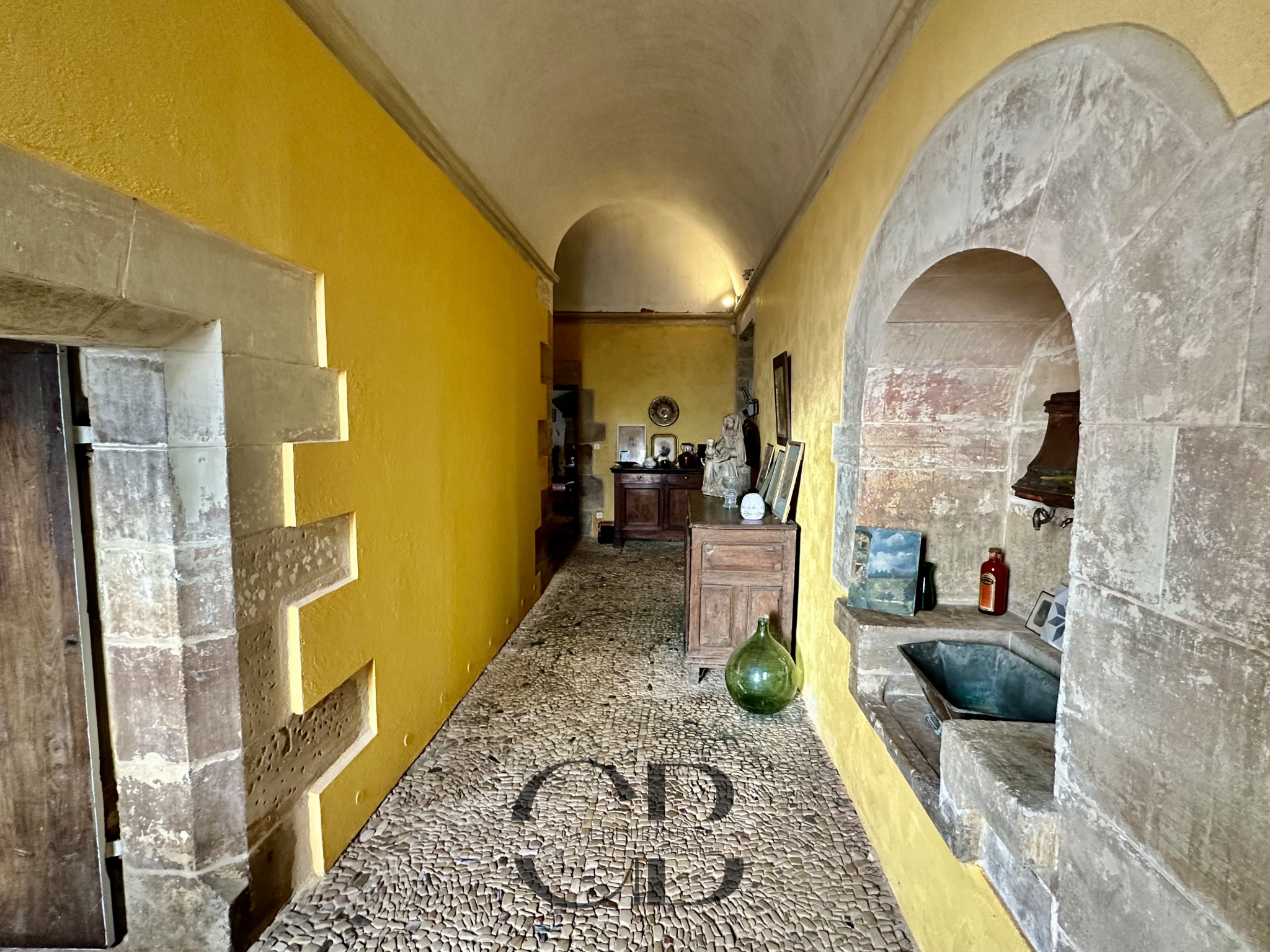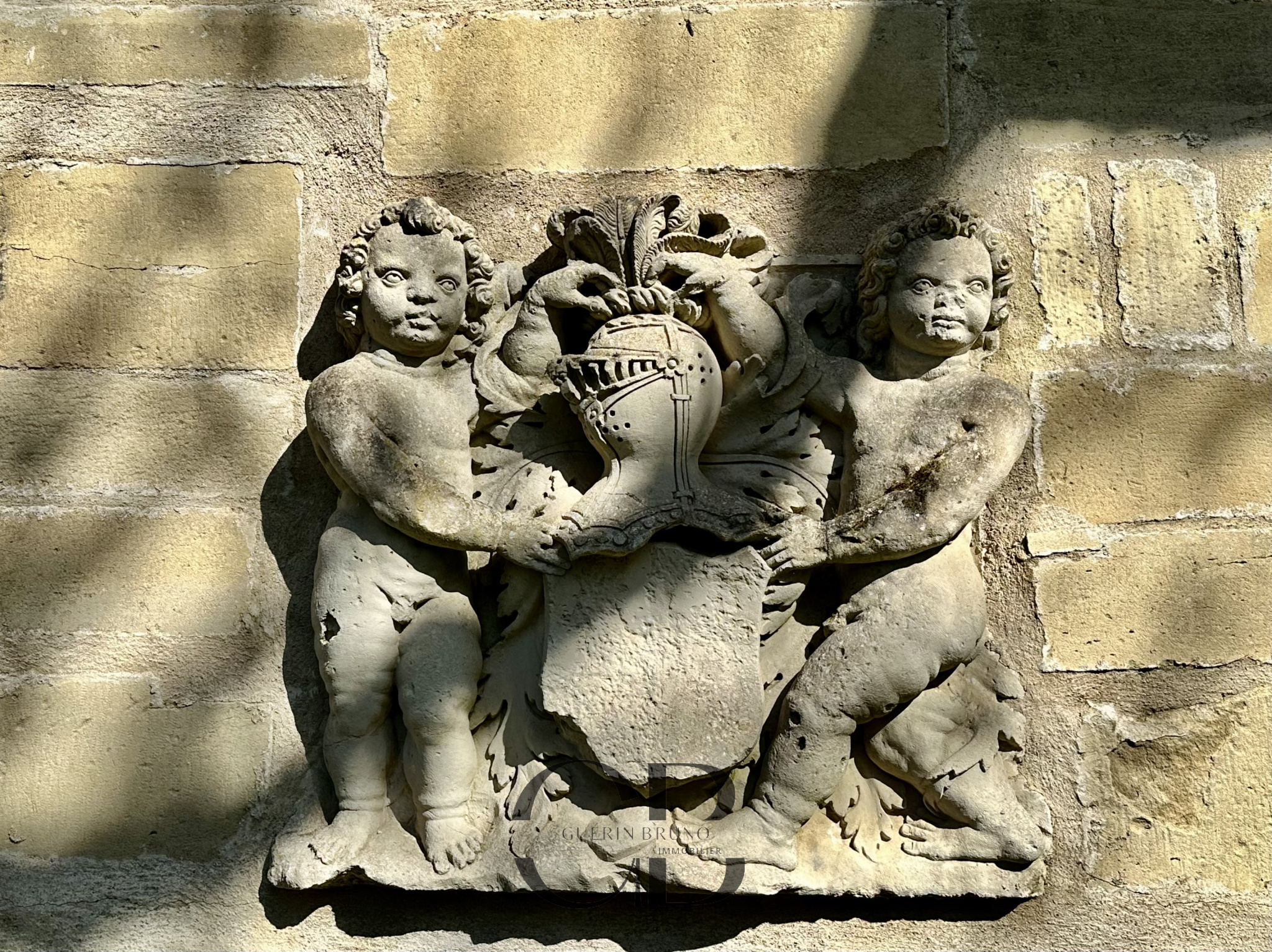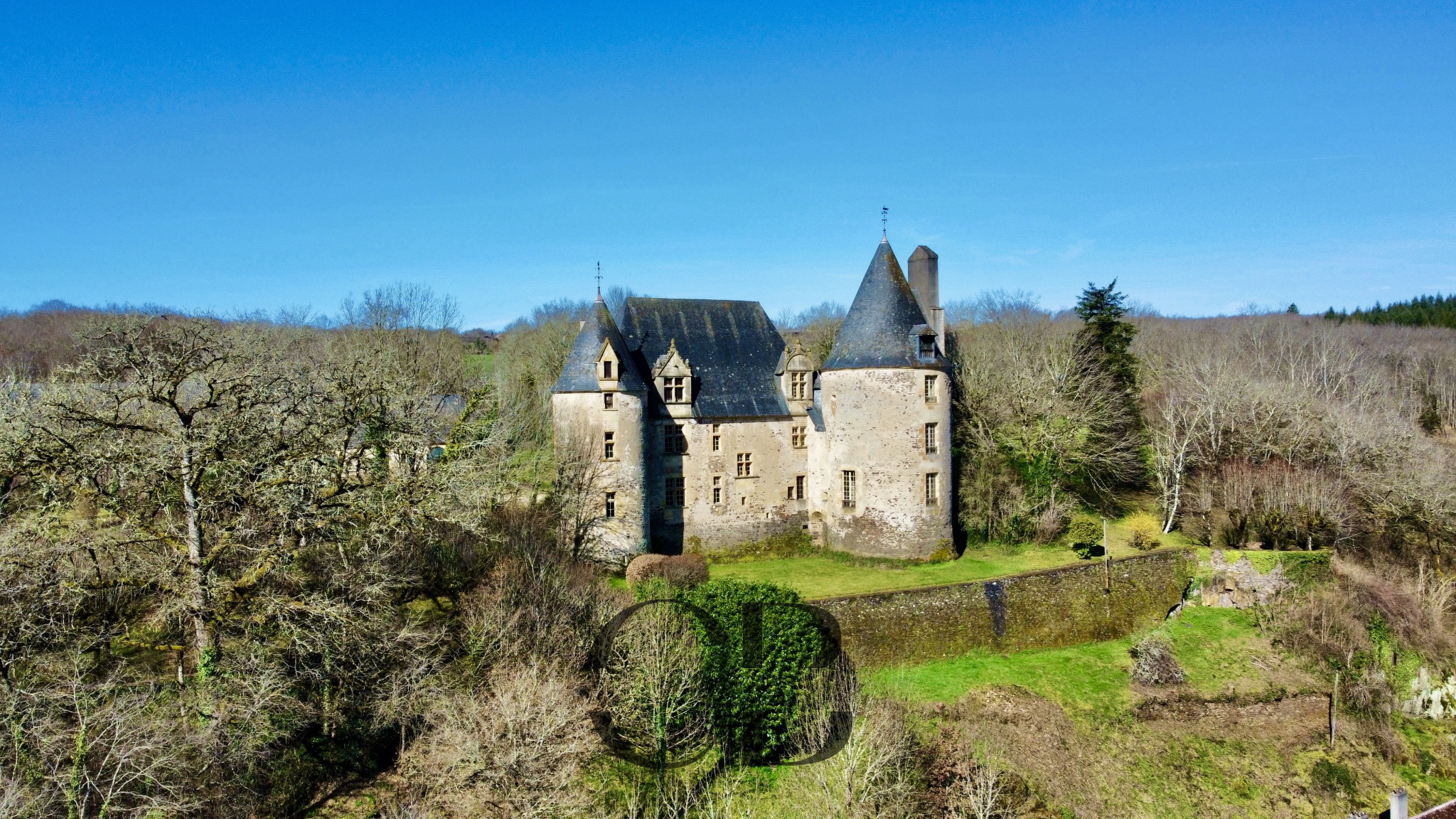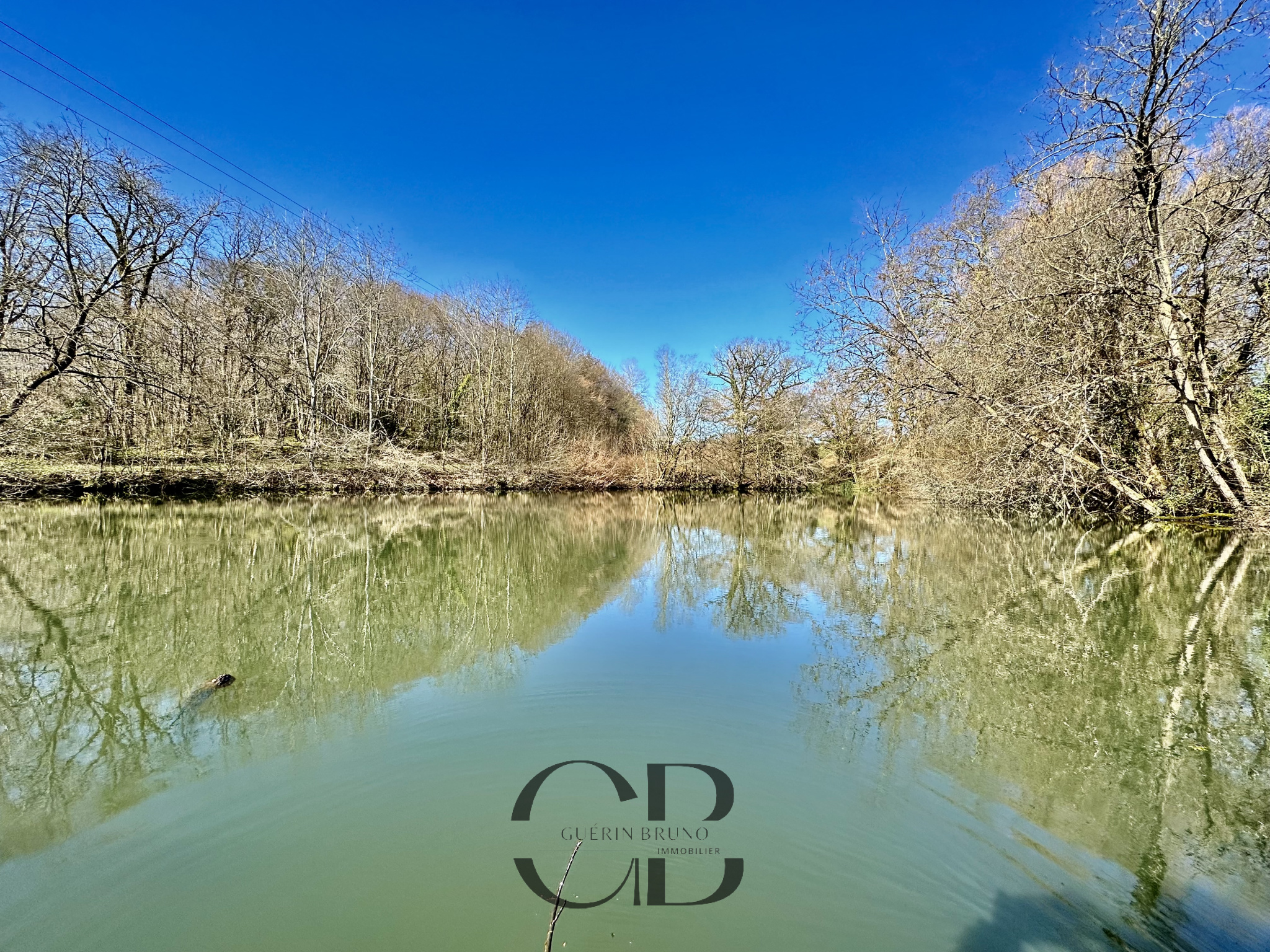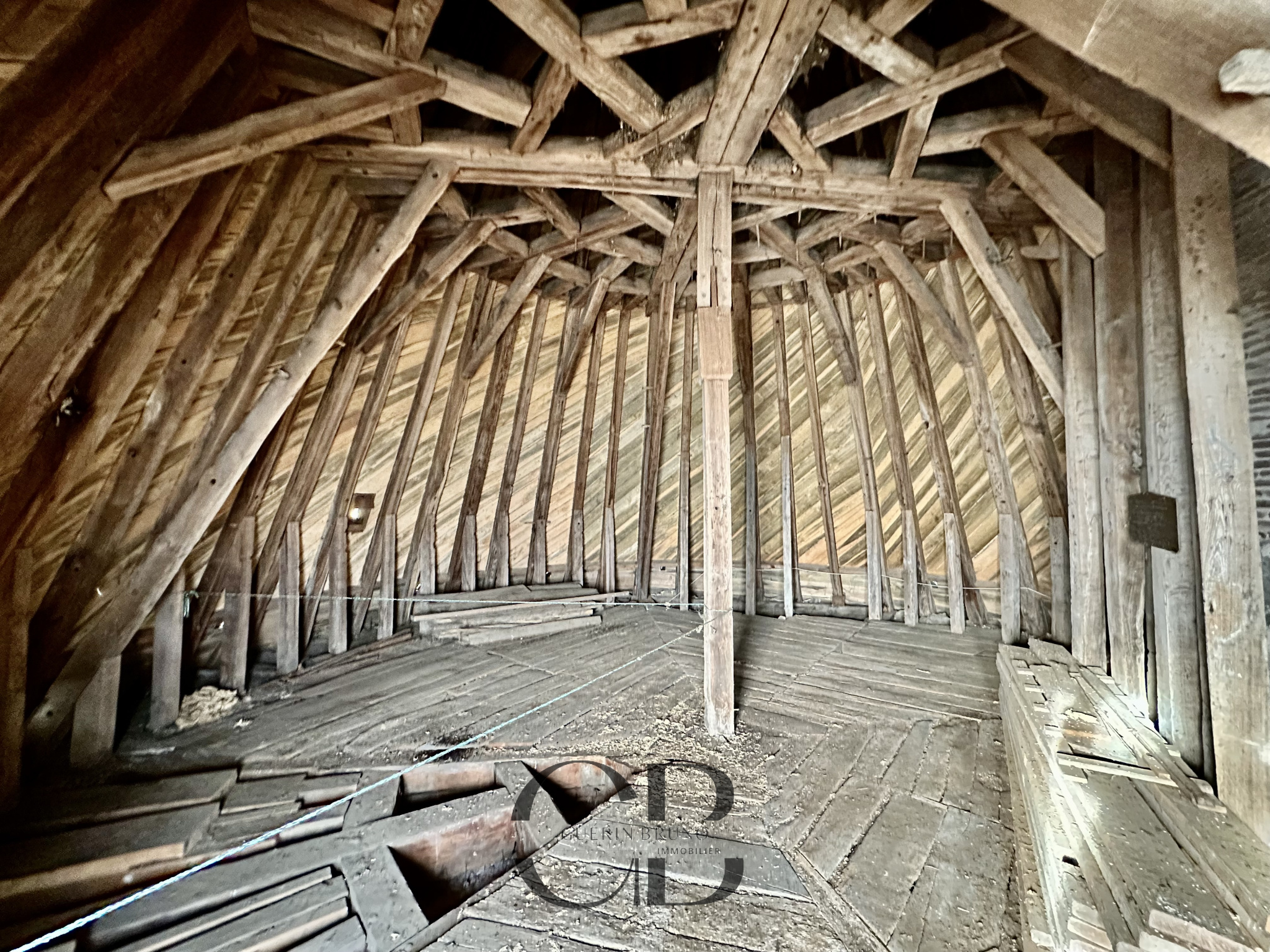Magnificent 15th and 18th century castle, listed, in Dordogn
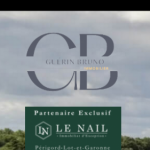
Bruno Guérin Immobilier Bergerac
Description
This Magnificent Castle, whose construction dates back to the 14th century, is located in the Dordogne, between Brive and Périgueux. Nestled on the side of Coline overlooking the Auvézère river, it benefits from a beautiful environment without nuisance. This property extends over more than 12 hectares made up of a park and garden, woods, a pond and numerous buildings (caretaker's house, barn, stables and henhouse, etc.). Originally, this area probably housed a fortified house, erected to monitor and protect the ford crossings between Limousin and Périgord. At the end of the Hundred Years' War (1337-1453), this fortification lost its reason for existence. In 1521, Pascal Dolce, originally from Béarn, established a forge along the Auvézère, near the now obsolete works. Under the direction of his successor, Noël Souvelin, the forge prospered. The latter, probably, obtained the concession of the old abandoned fortification and undertook important work to transform it into a residence. His daughter, Marguerite, married François Pasquet, a merchant from Excideuil, in 1539. The Pasquet family then took charge of the castle and the forge for several generations. Jean Pasquet, their eldest son, served Kings Henri III and Henri IV as a knight. His mark is visible throughout the castle and the garden, whether through his motto ('Spes mea deus') or his representation as 'Knight with the white feather'. In 1656, following a marriage, the castle and the forge came under the ownership of the de Lubersac family. At the time of the French Revolution, the castle was abandoned and became national property. It was only in 1819 that Louis Combescot, ancestor of the current owner and blacksmith master at Etangs de Bord, bought the forge and the castle, both in an advanced state of disrepair. He and his descendants began clearing the irreparable ruins resulting from decades of neglect. The family moved to the castle, and the Forge remained active for more than a century, until the last casting of cast iron from the blast furnace in 1930. In its current structure, the castle has a central main building, placed between two round towers, and a wing located at right angles to this building. The large courtyard and the park which extends it are limited to the west by the buildings serving as common areas. The west facade of the main building has mullioned windows on both floors and two dormer windows opening into the attic; these dormer windows are topped with pediments with solid tympanums. The square building, opening towards the south, dates from the 17th and 18th centuries, but was rebuilt on older foundations. Behind this wing, a square pavilion was added in the 19th century, integrating into the whole. On the east facade, overlooking the river and the forge, the two towers of unequal diameter were probably originally connected by a curtain wall. The main building which is incorporated between them has, as on the west facade, mullioned windows and dormer windows with ornate pediments. The architectural load of the junction between the north tower and the main building is supported by a trumpet, in the hollow of which is nestled a sculpture representing the tortured face of a character with a draped headdress. The Renaissance portal, reassembled in the park, symbolizes the Italianate trend of the end of the 16th century through the multiplication of its sculptures. On a scroll in the center of the entablature, reads the Castle's motto “SPES MEA DEUS”. The castle has been classified as a Historic Monument since 1979, closely linked to the Forge whose origins undoubtedly date back to the end of the Hundred Years' War. It was built from the 14th to the 16th century; it includes a main building flanked by two cylindrical towers; on
Details
Updated on May 24, 2025 at 6:20 am- Property ID: HZ846913
- Price: 1 700 000 €
- Property area: 640 m²
- Land area: 120,000 m²
- Bedrooms: 10
- Pieces: 17
- Bathroom: 0
- Year of construction: 1500
- Property type: Castles for sale
- Property status: sale
- ID Property Source: V10000099
Additional Details
- Heating type: oil radiator
- Type of cuisine: none
- Orientation: East
Address
- City Périgueux
- State / Country Dordogne
- Zip/Postal Code 24000
- Country France

